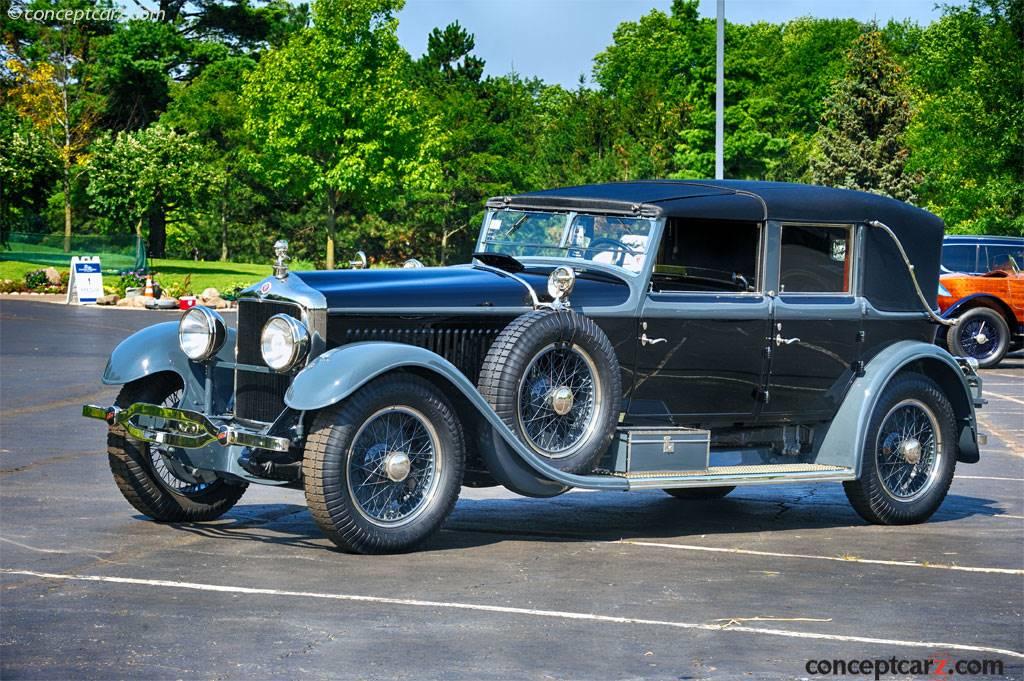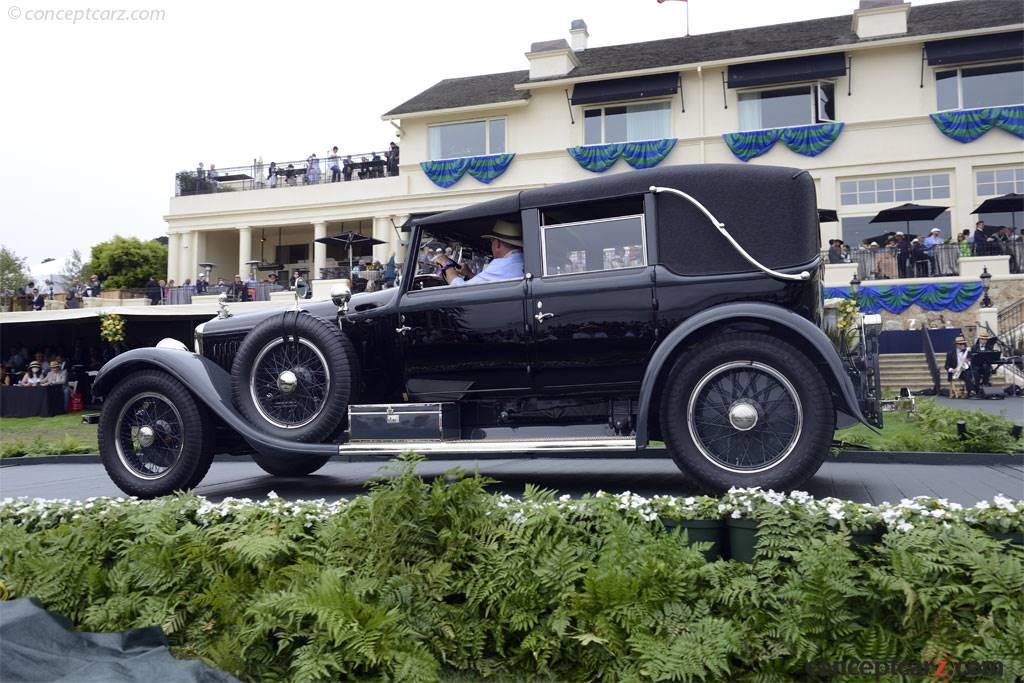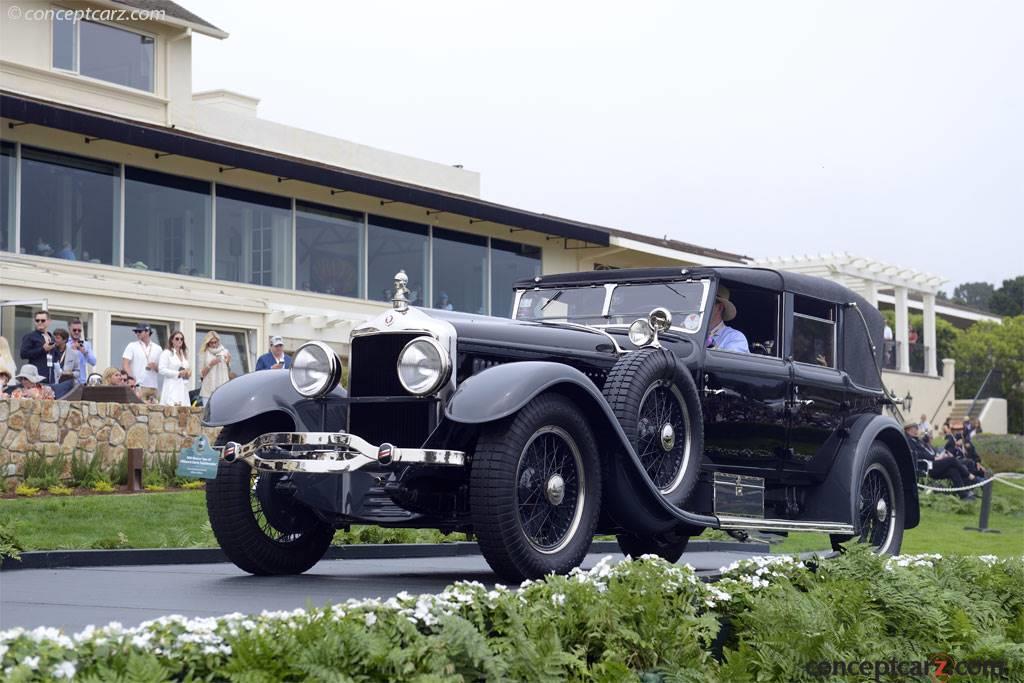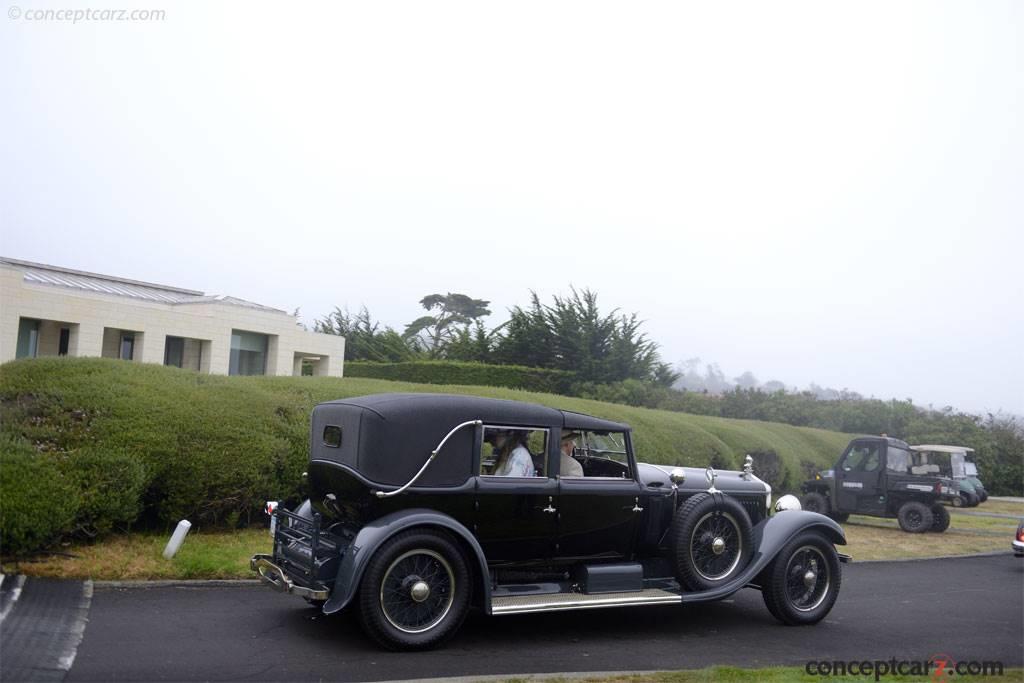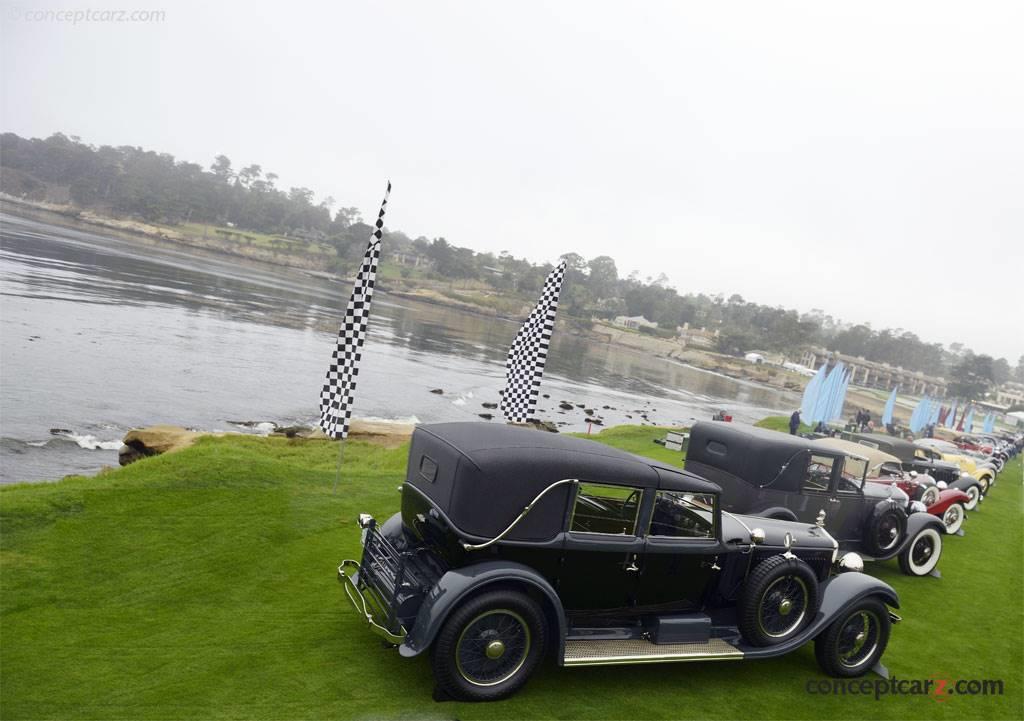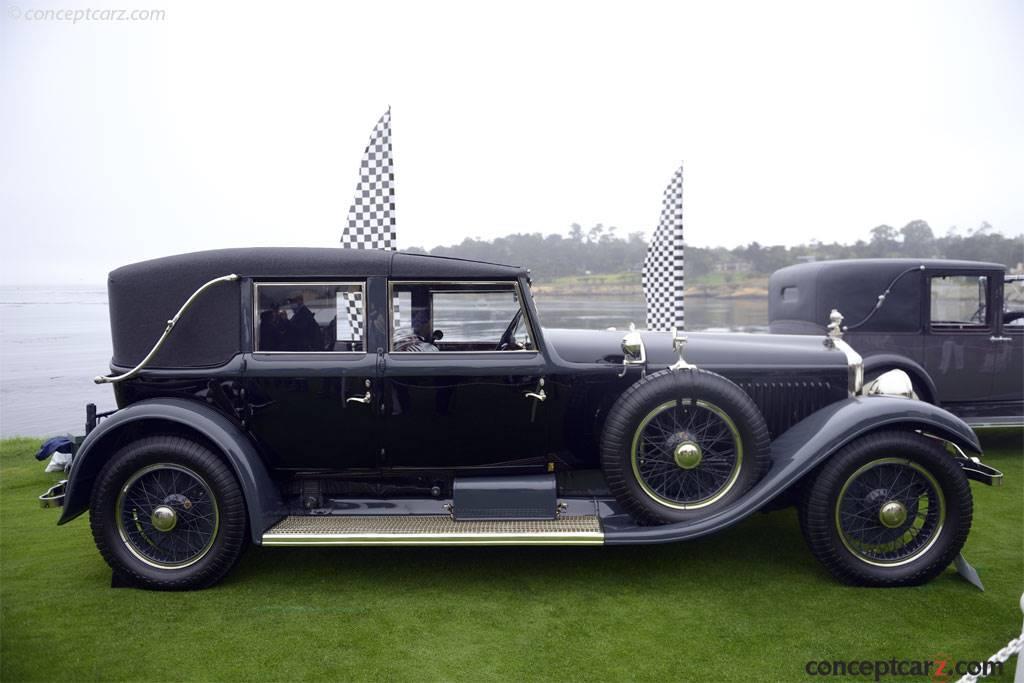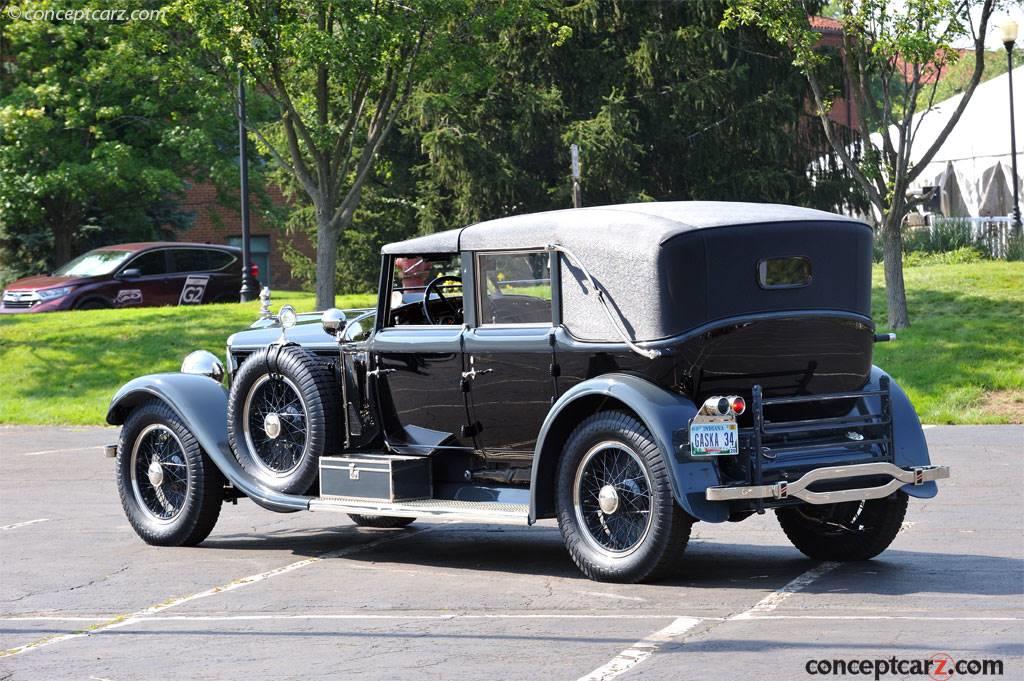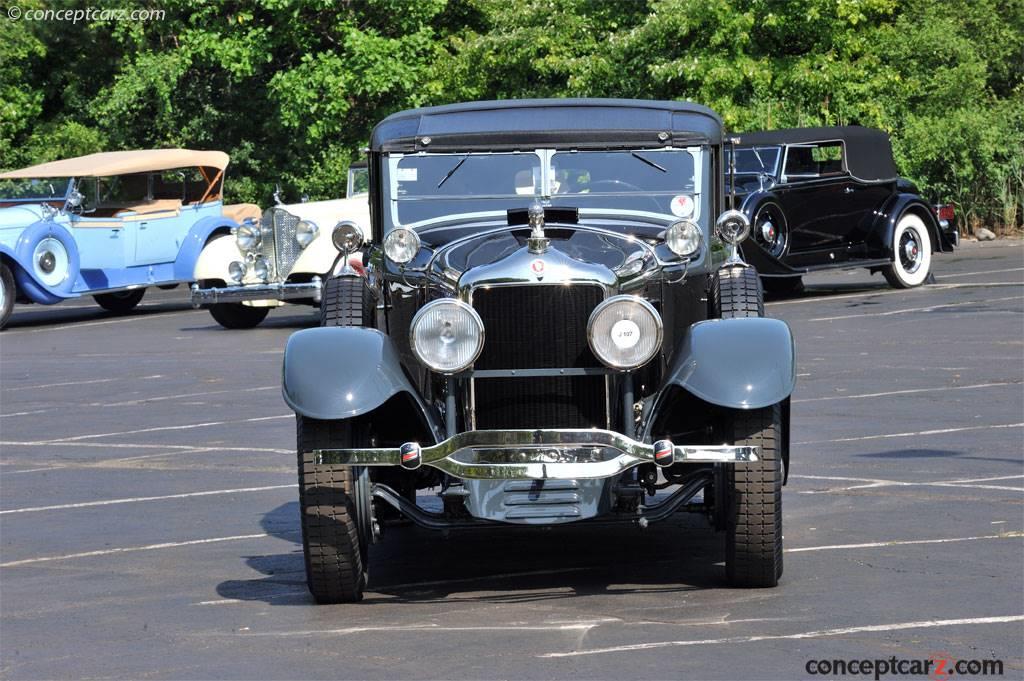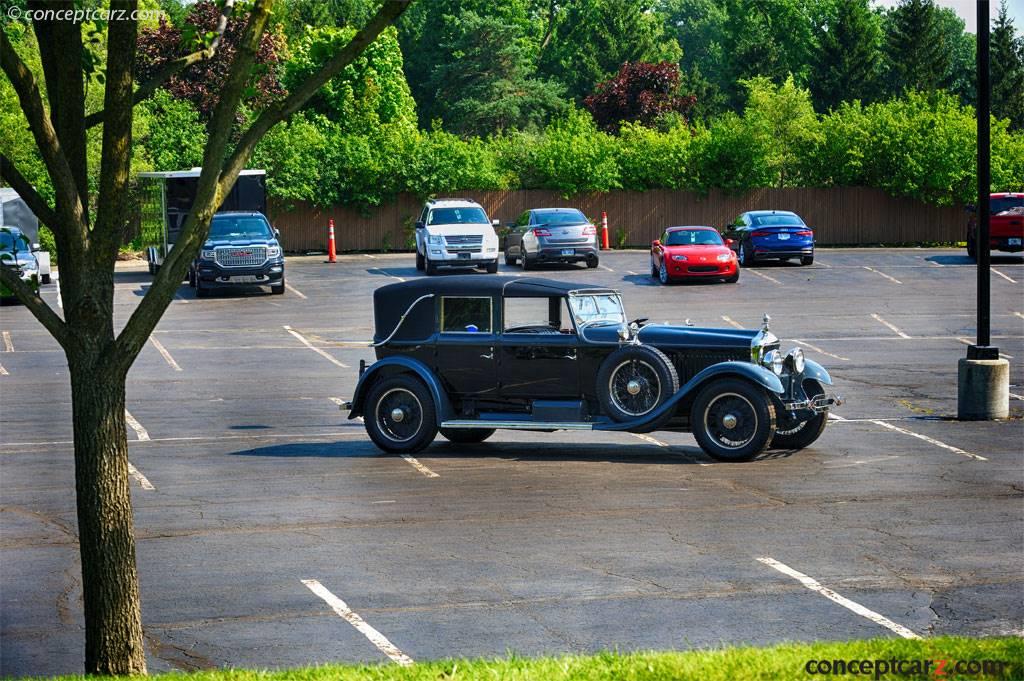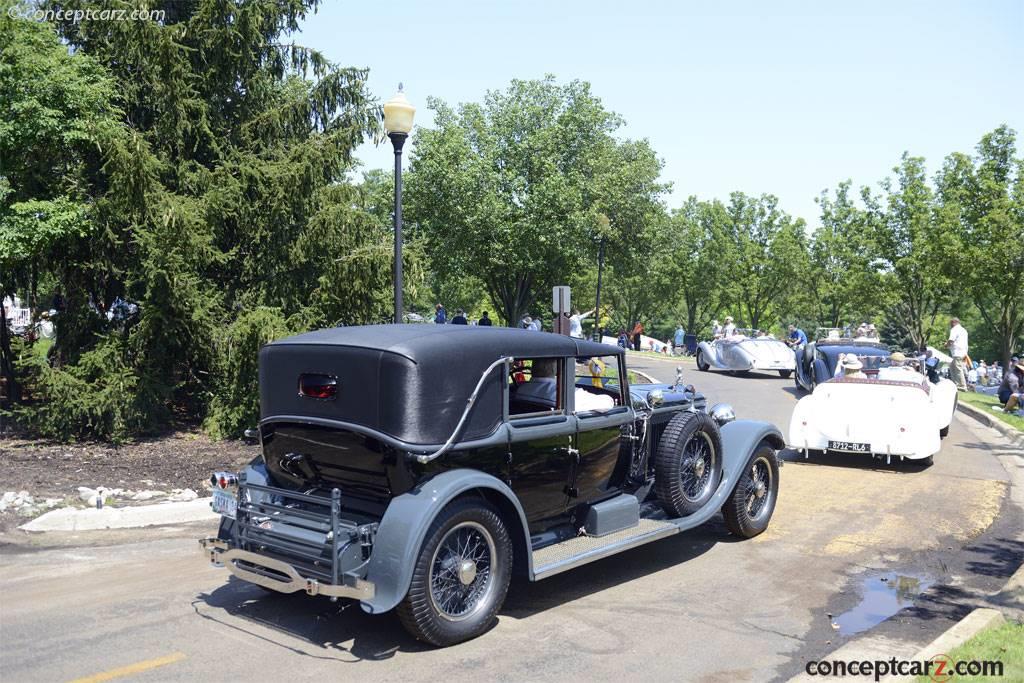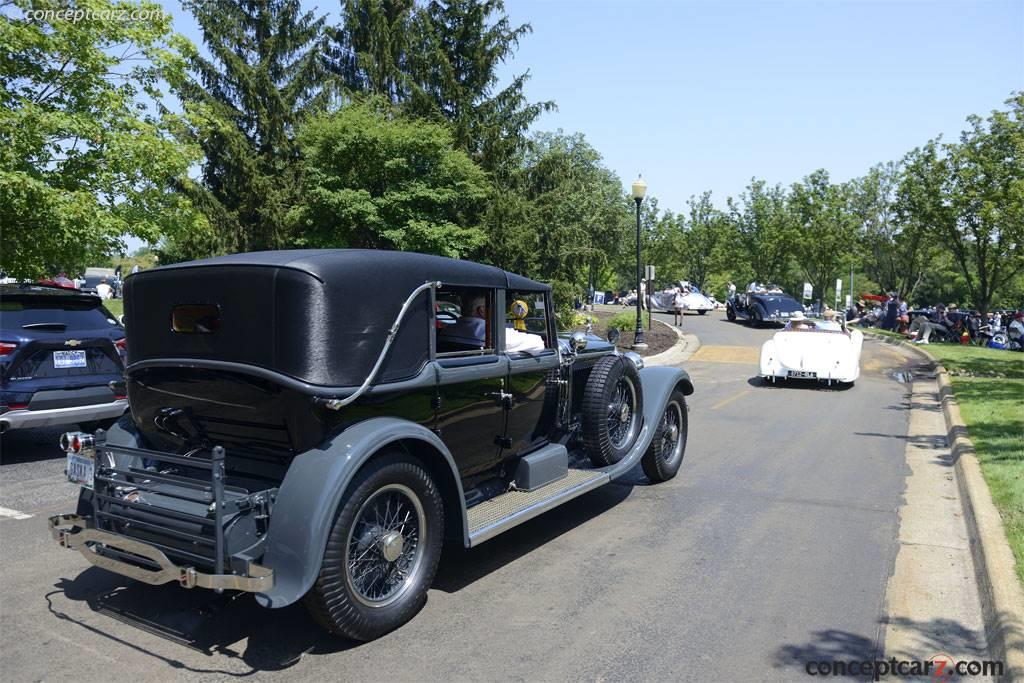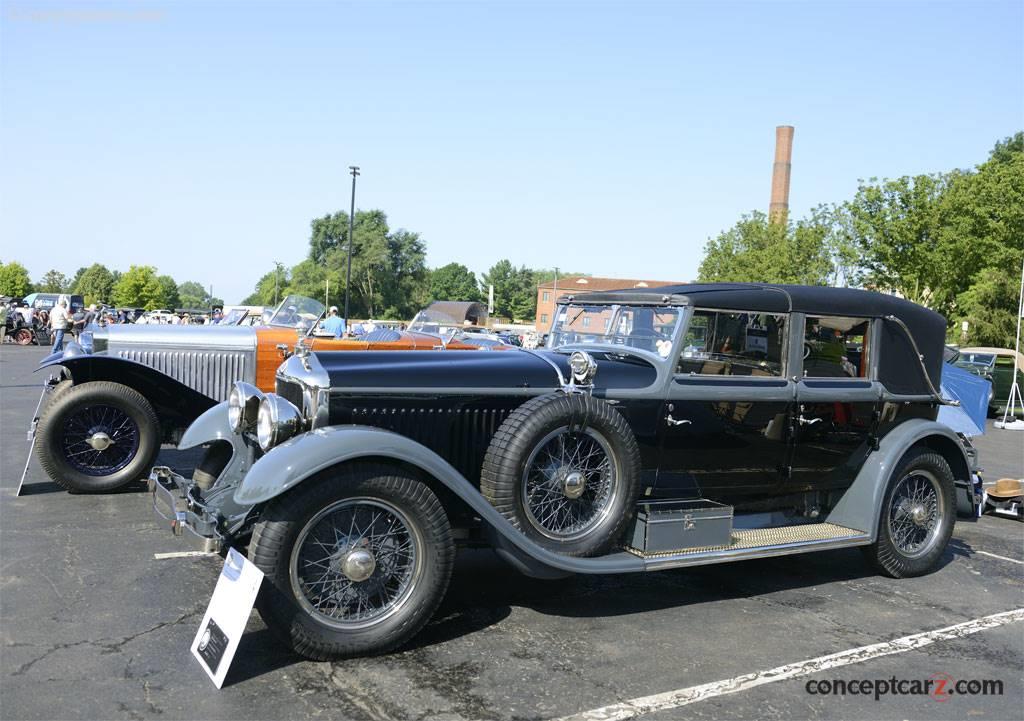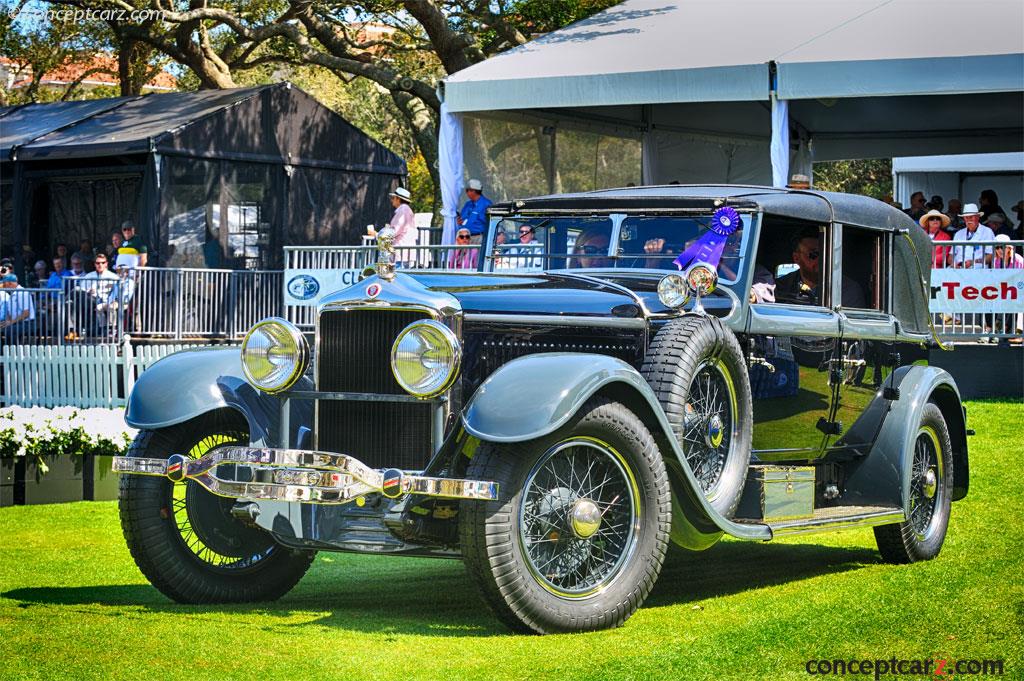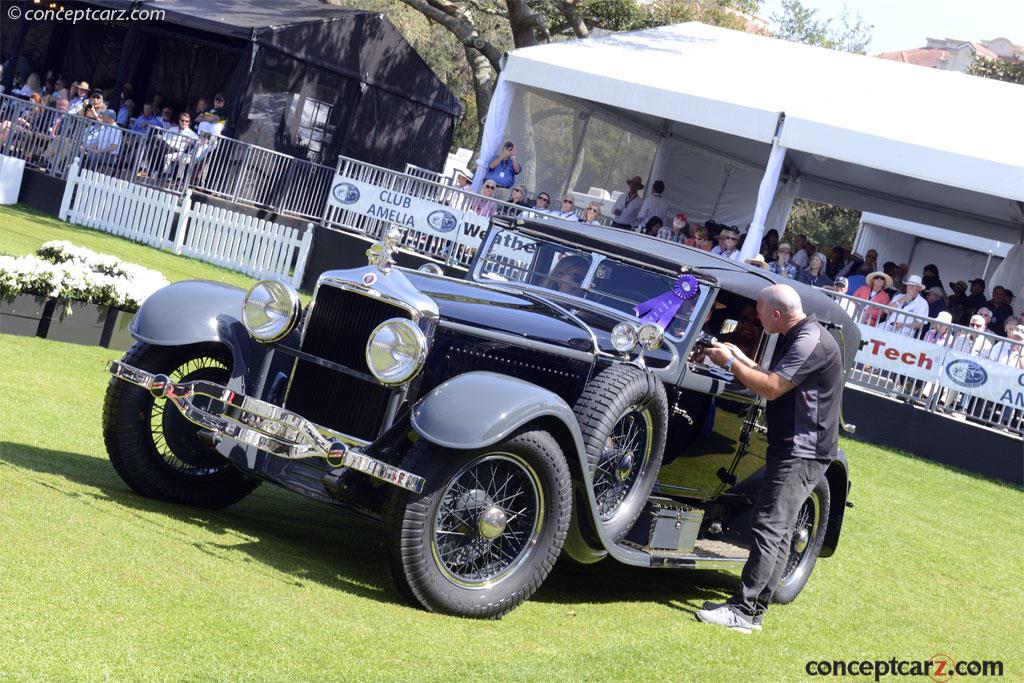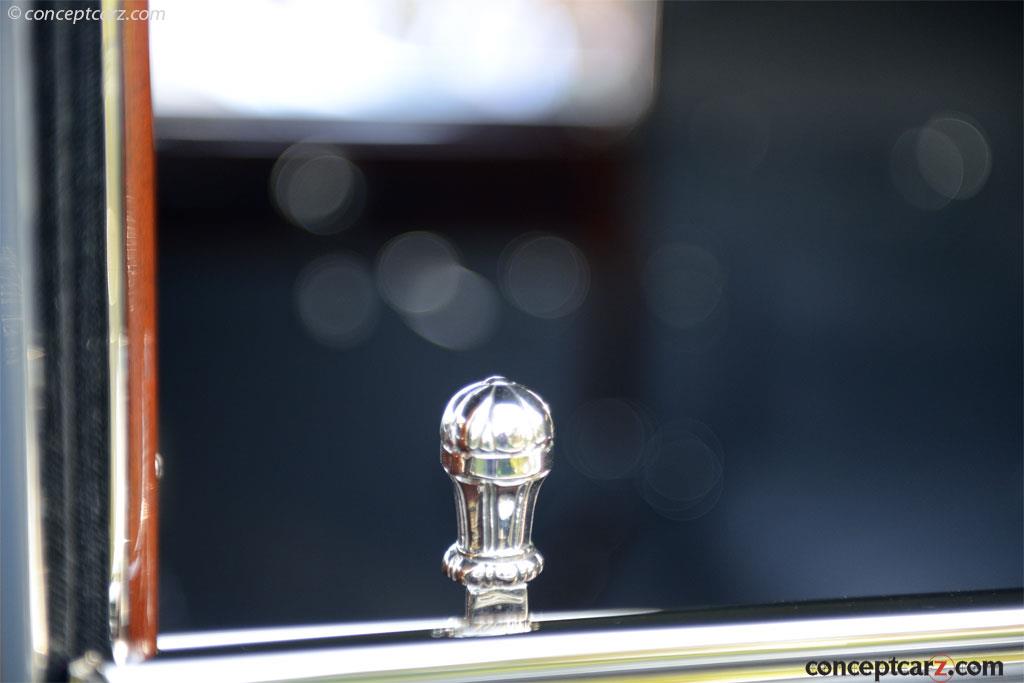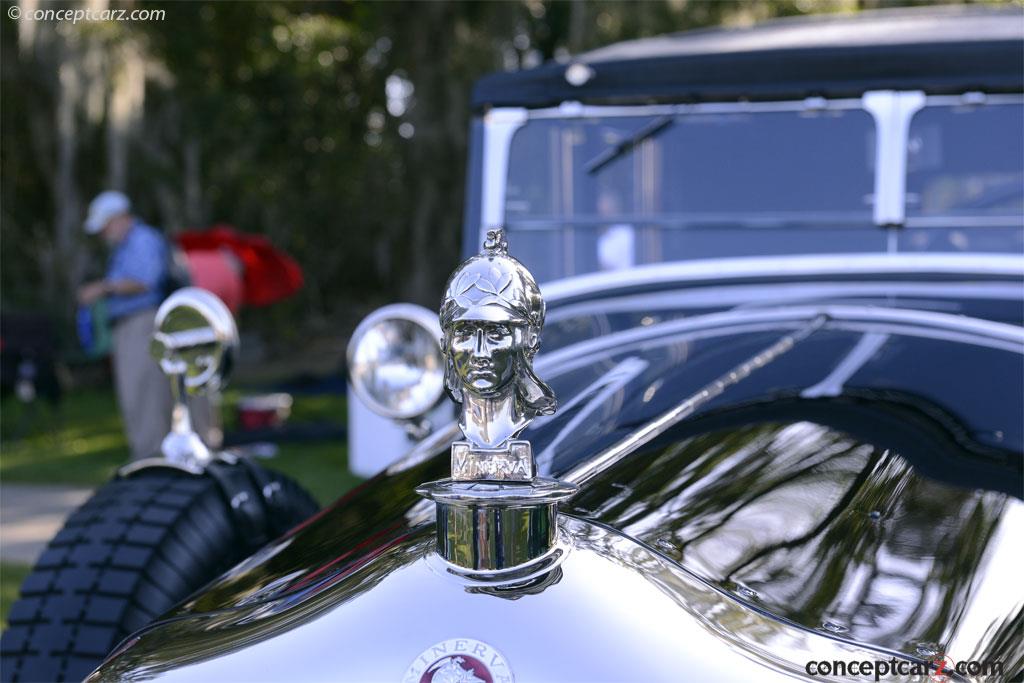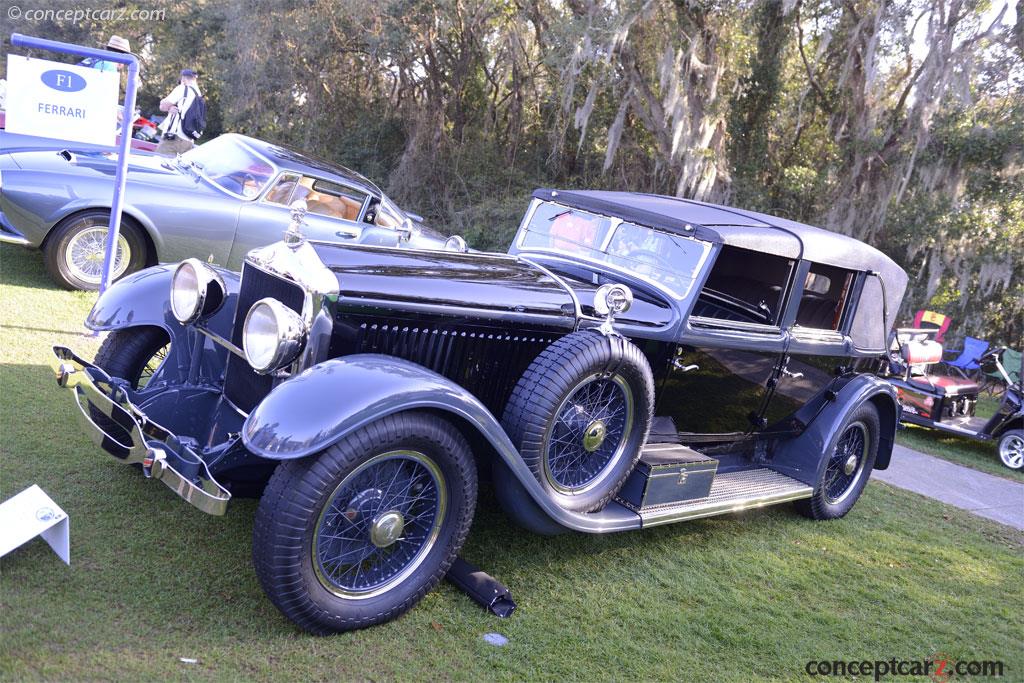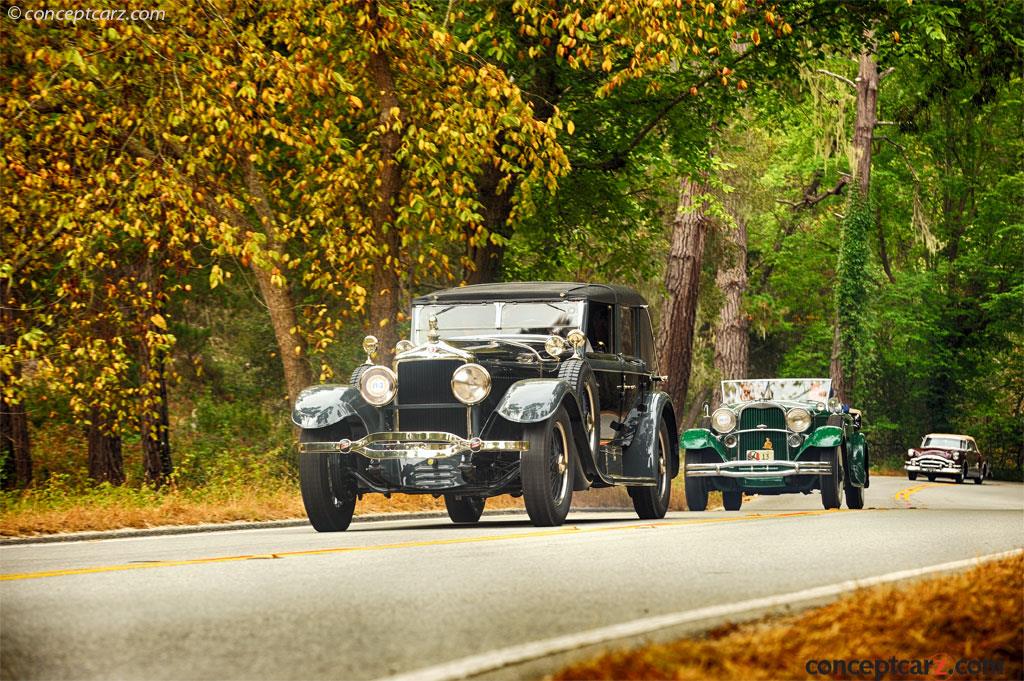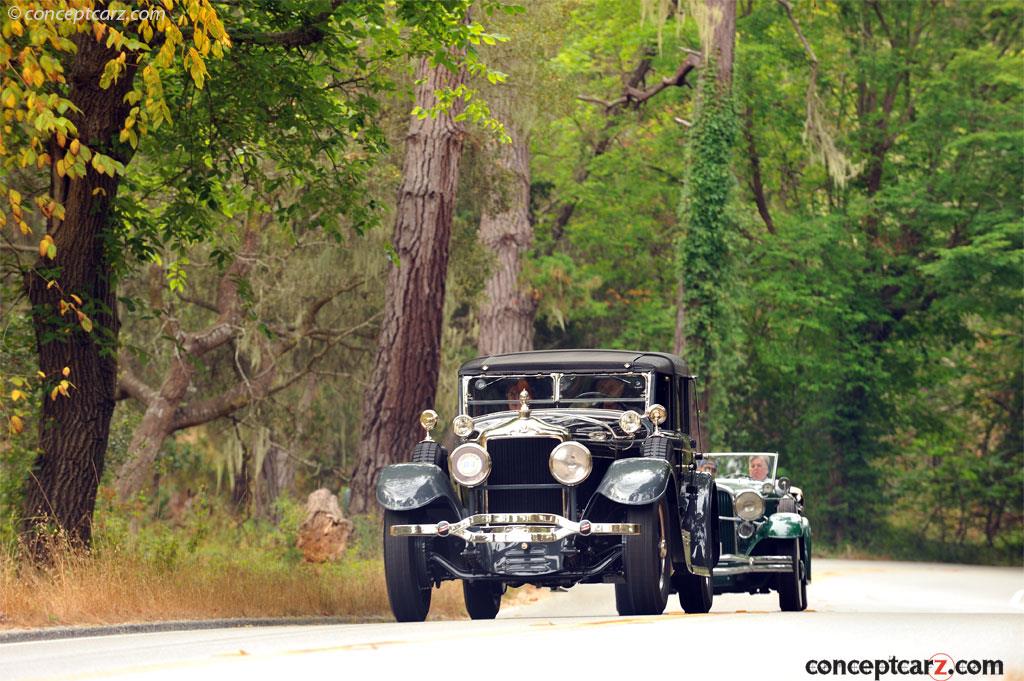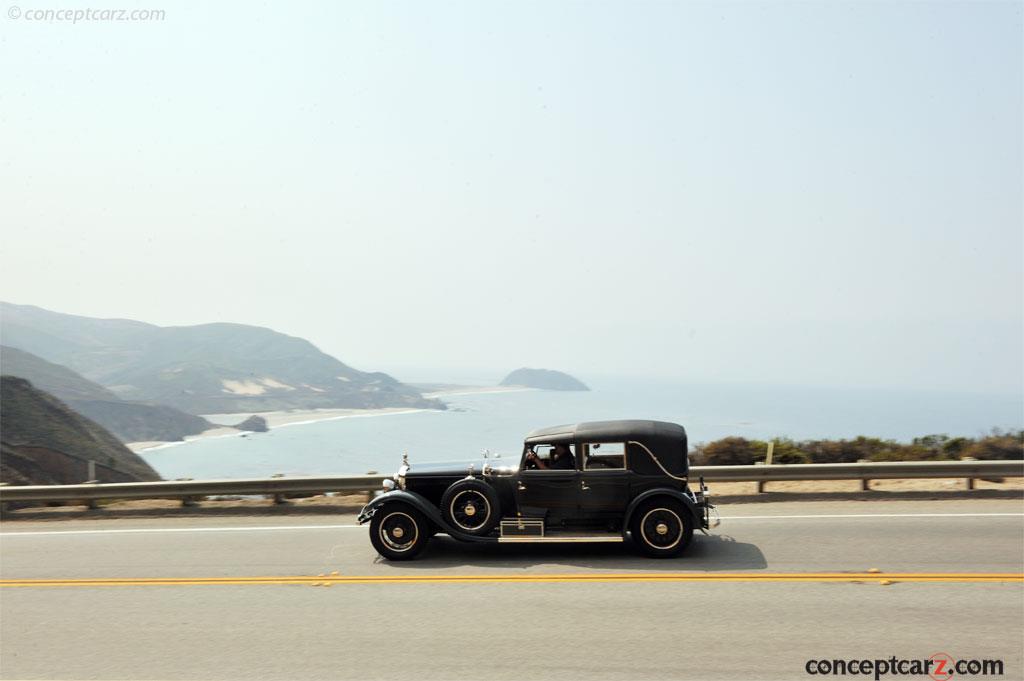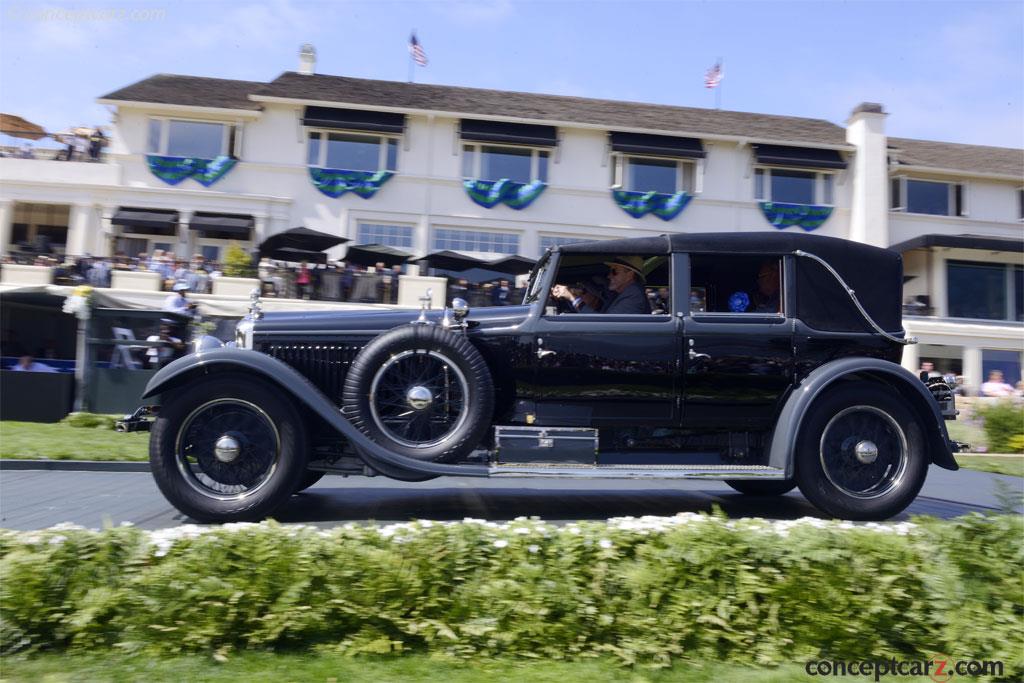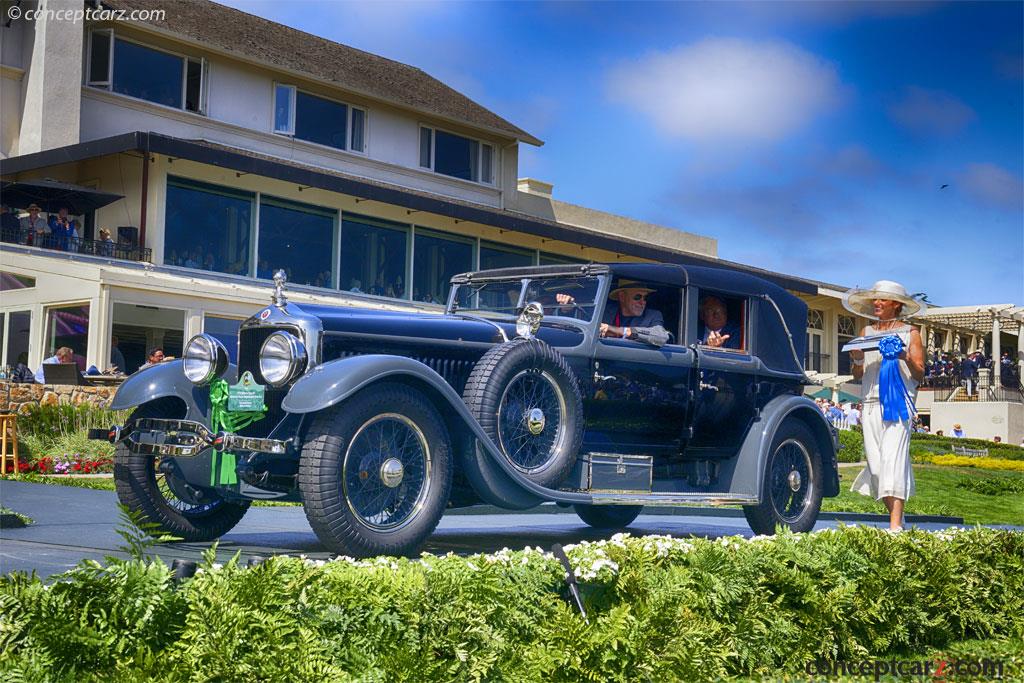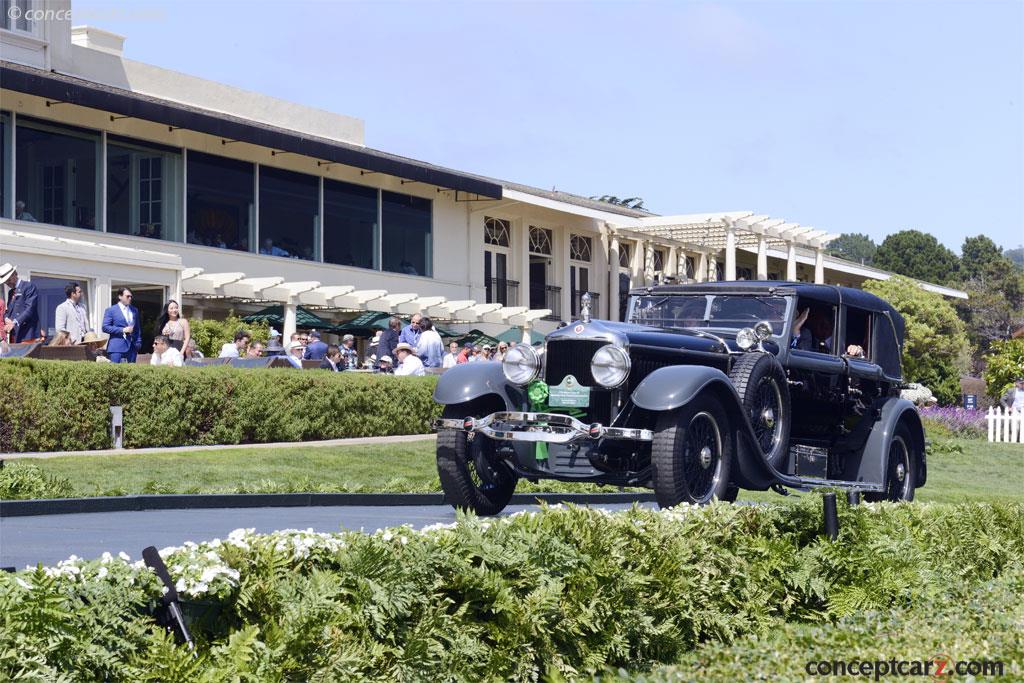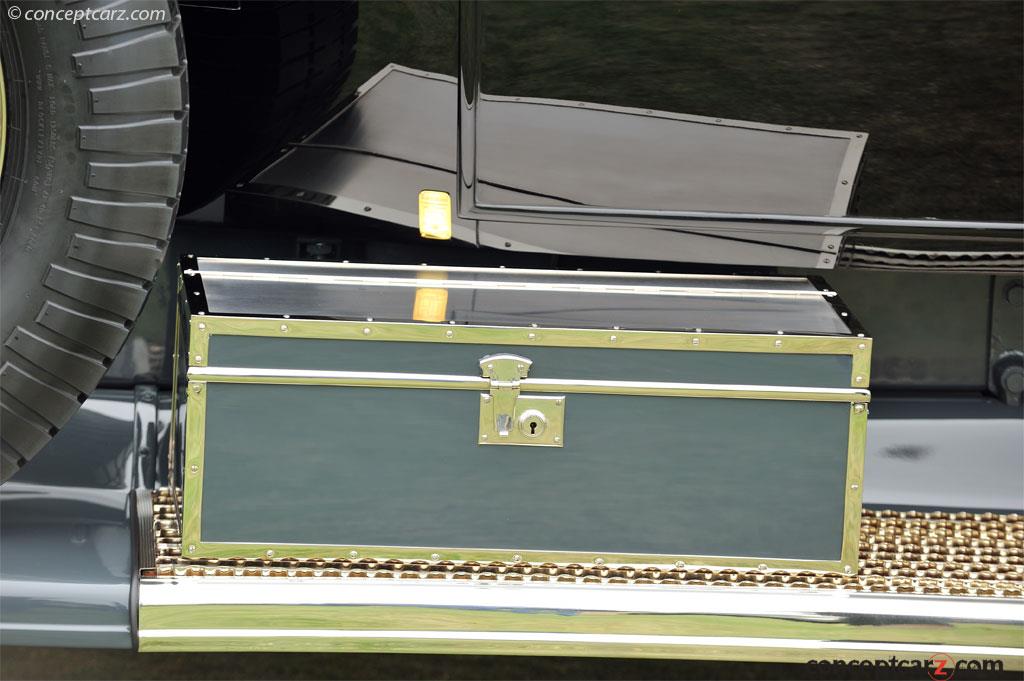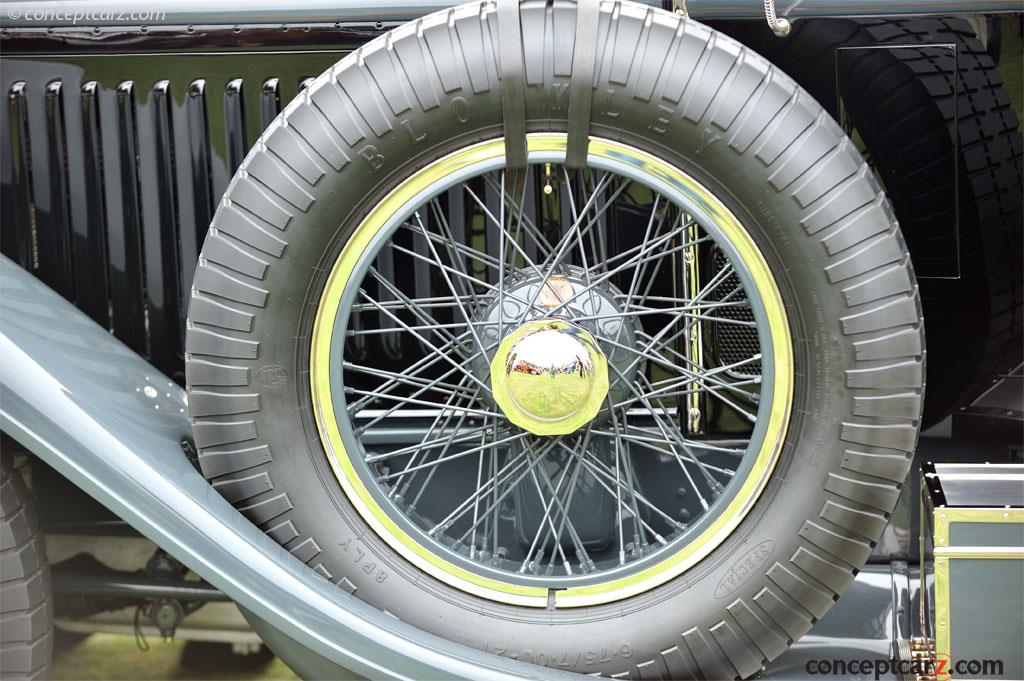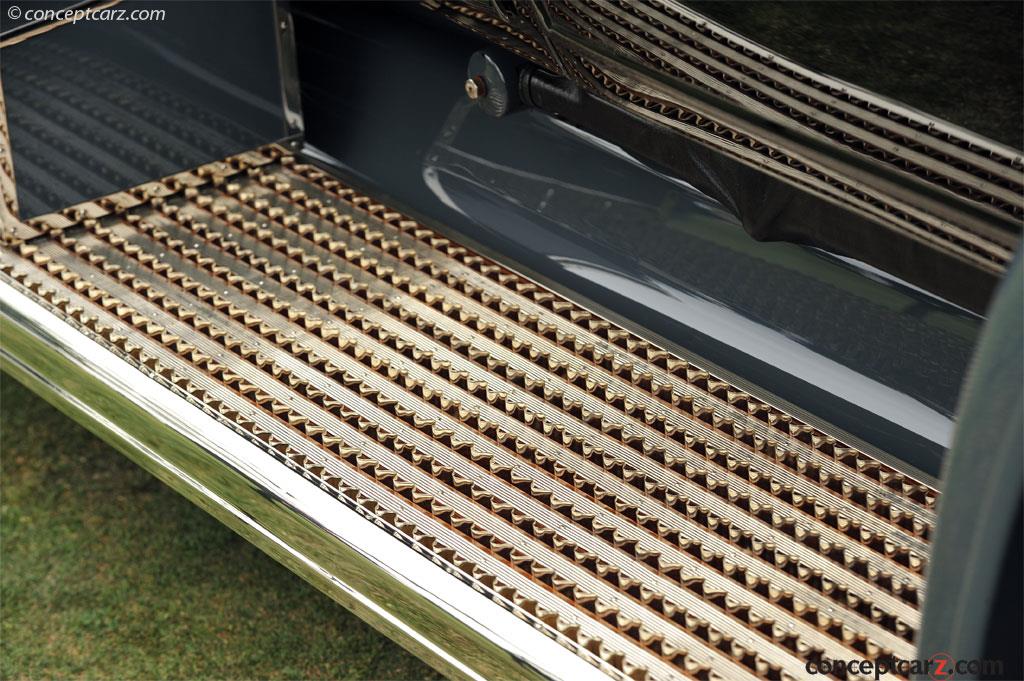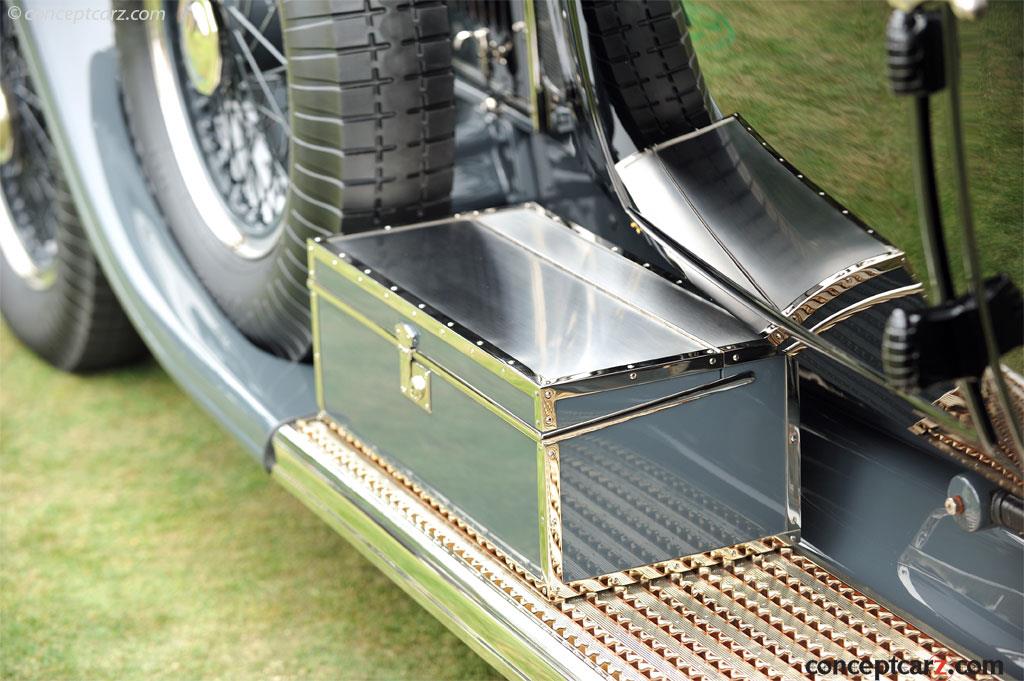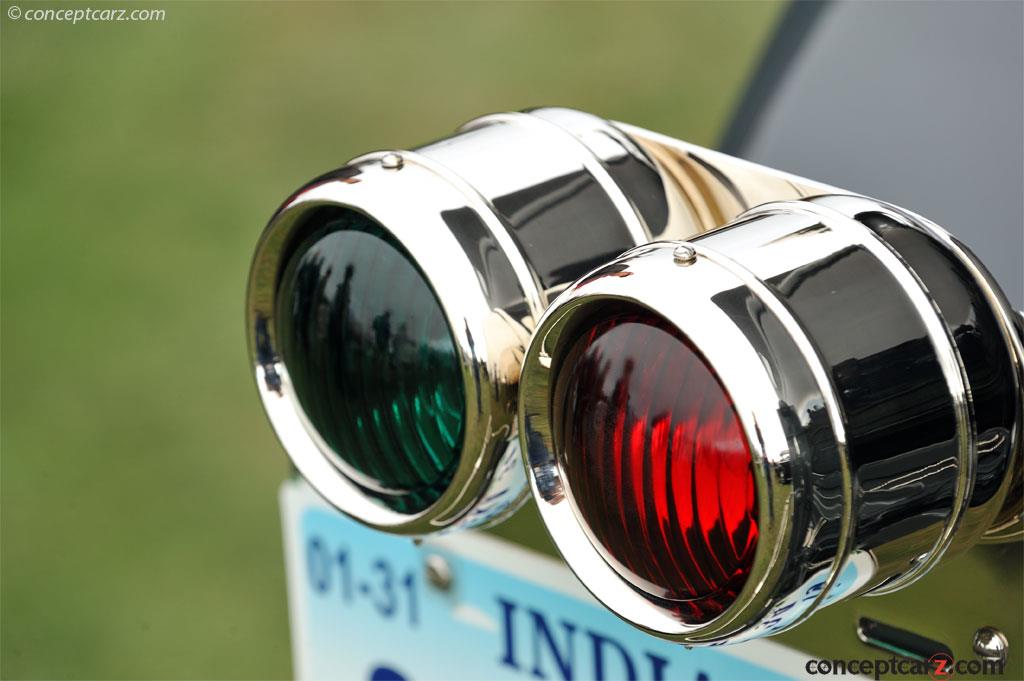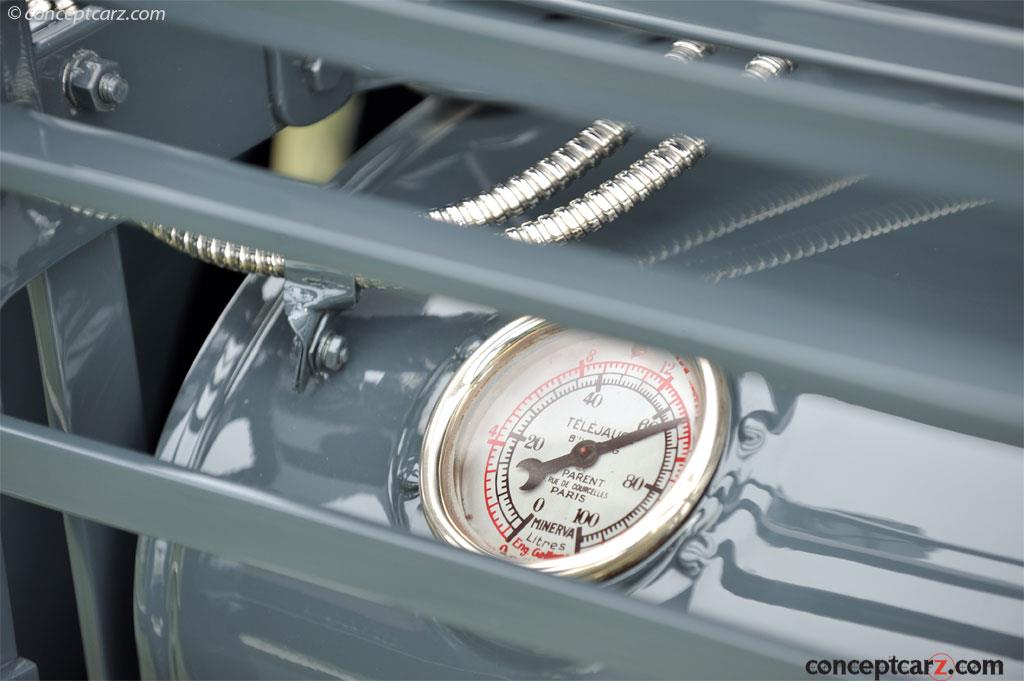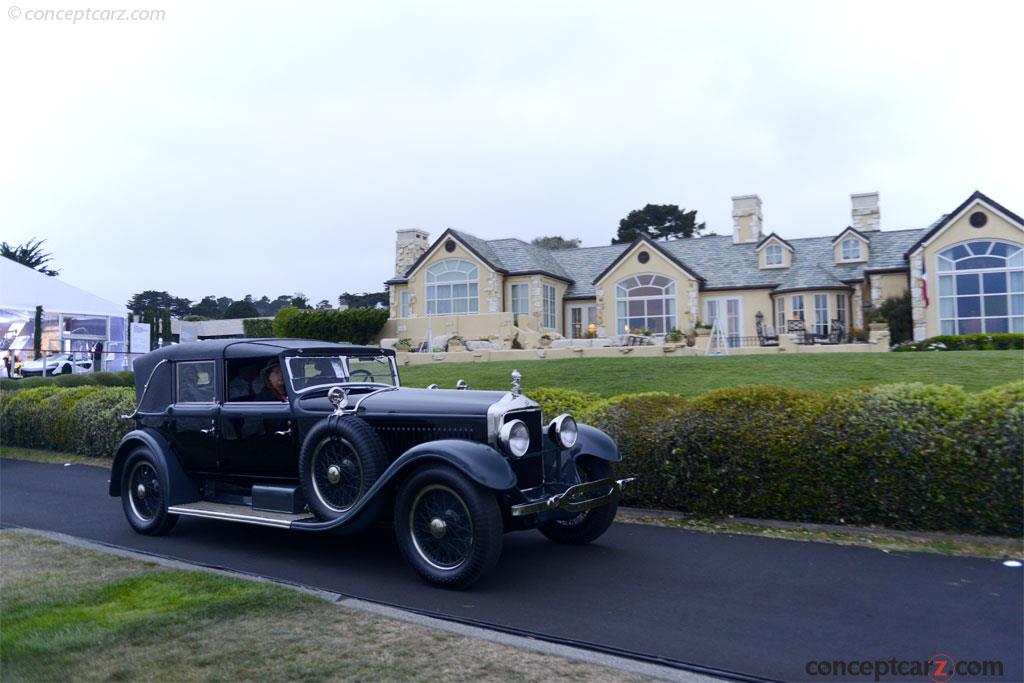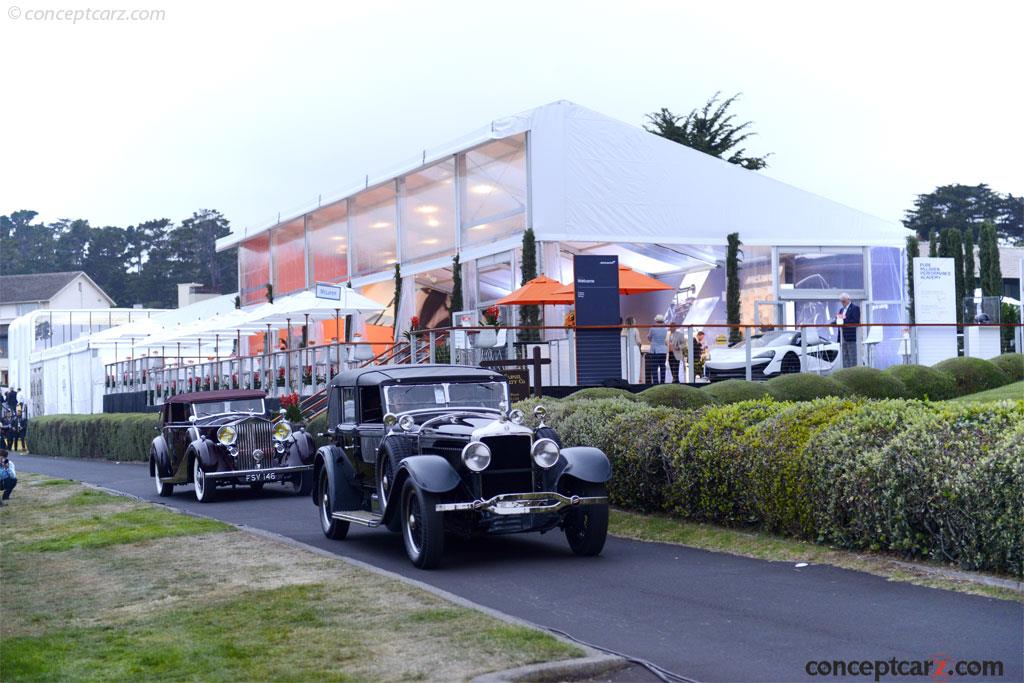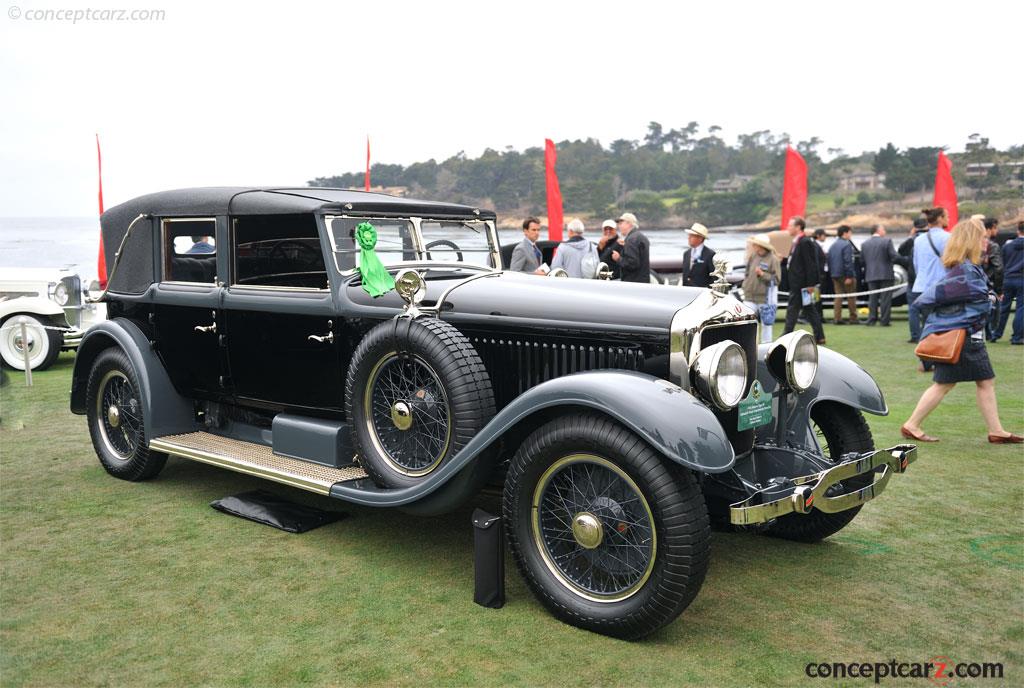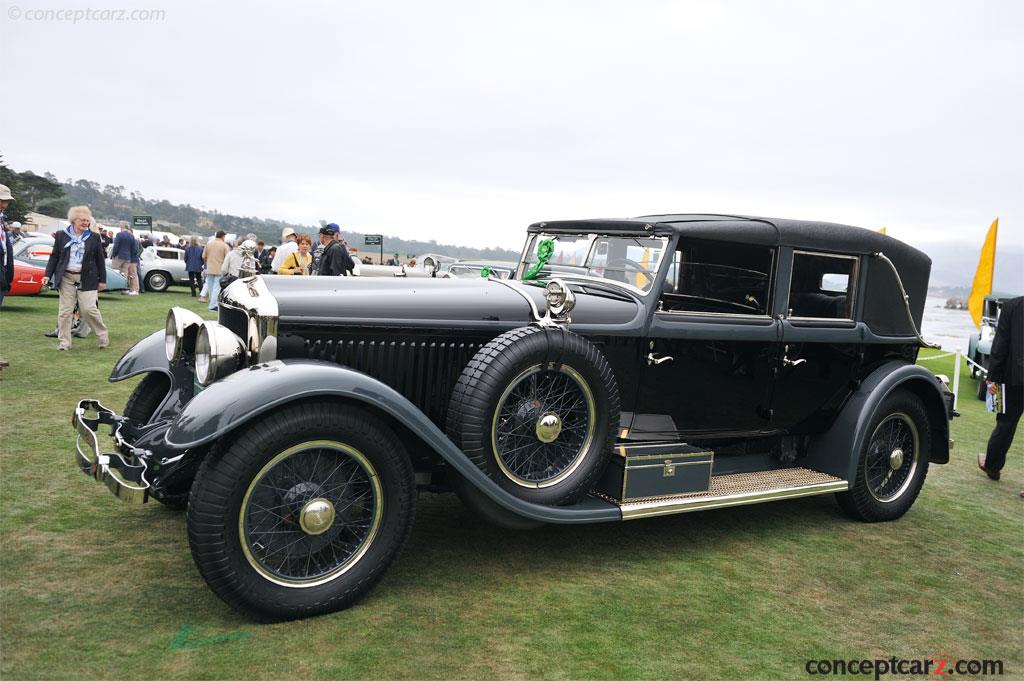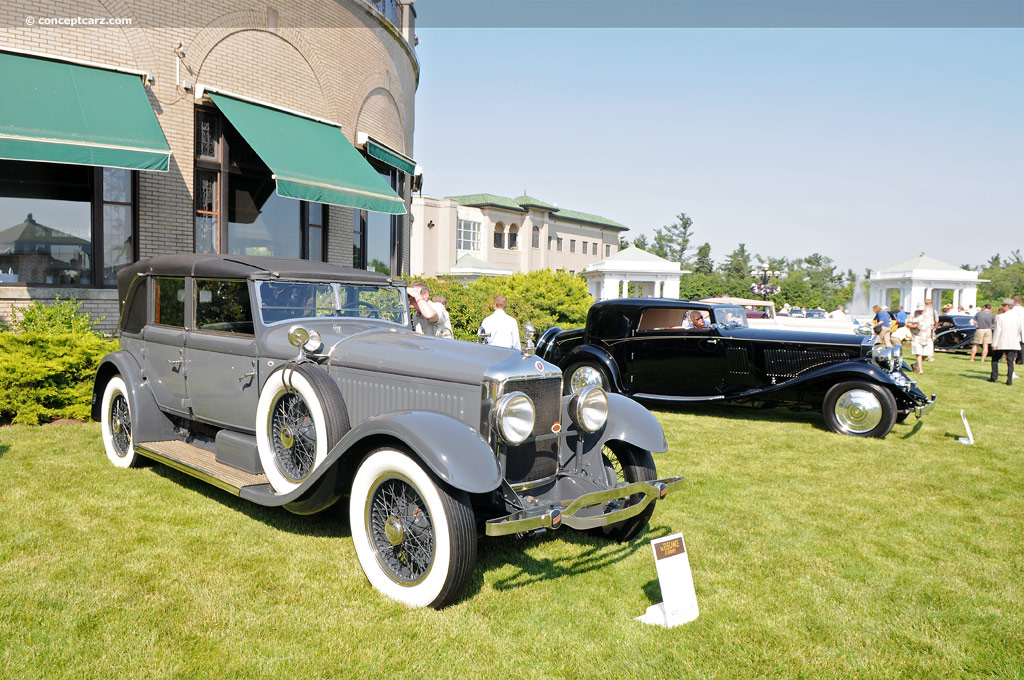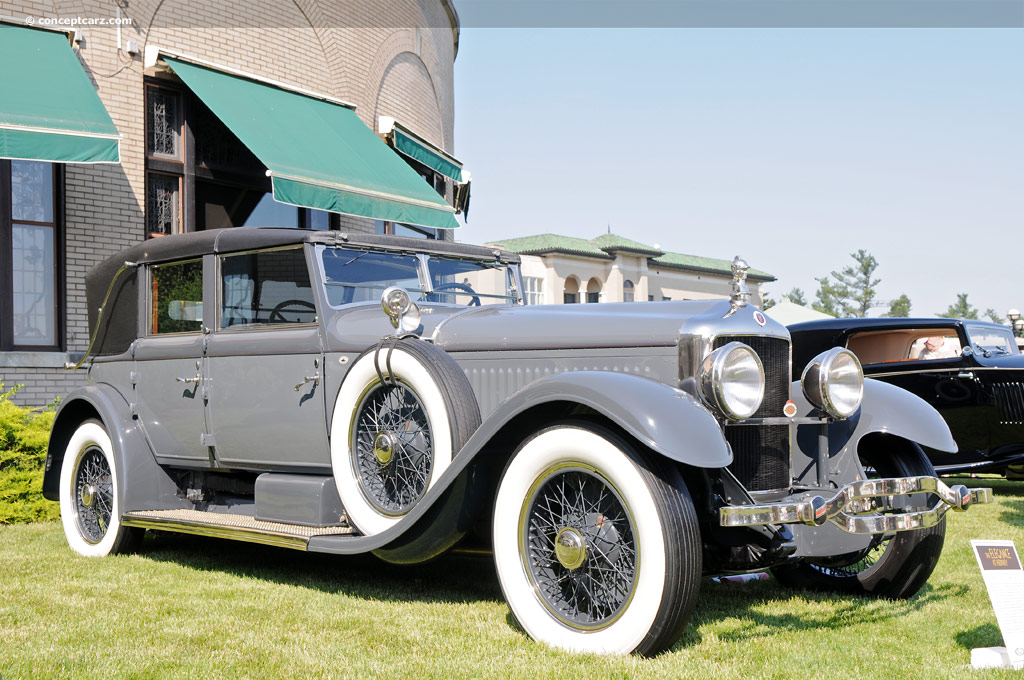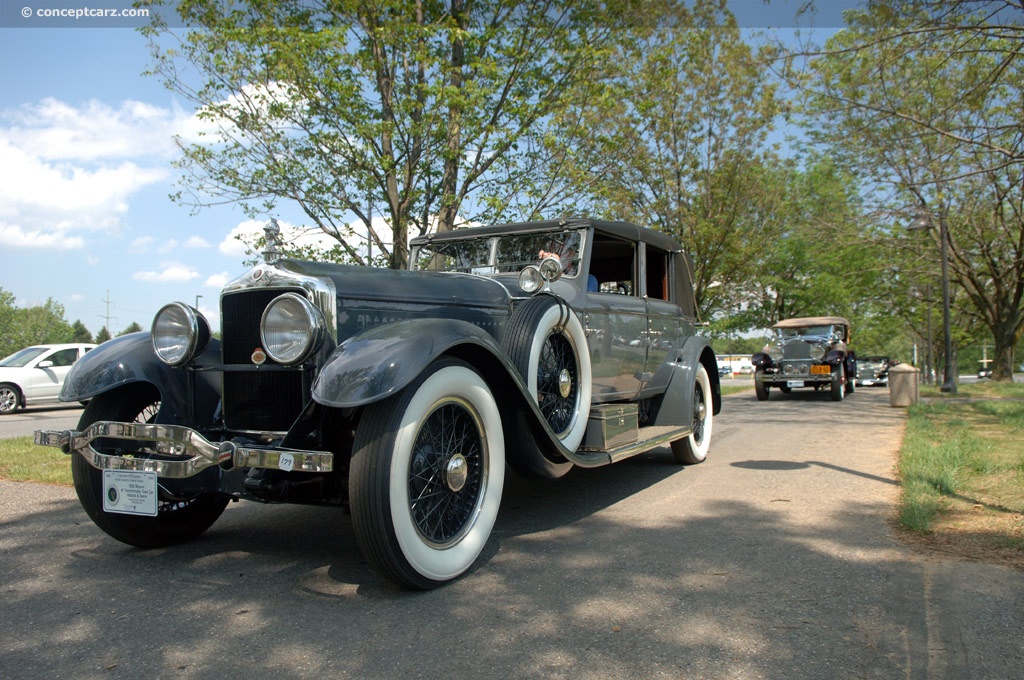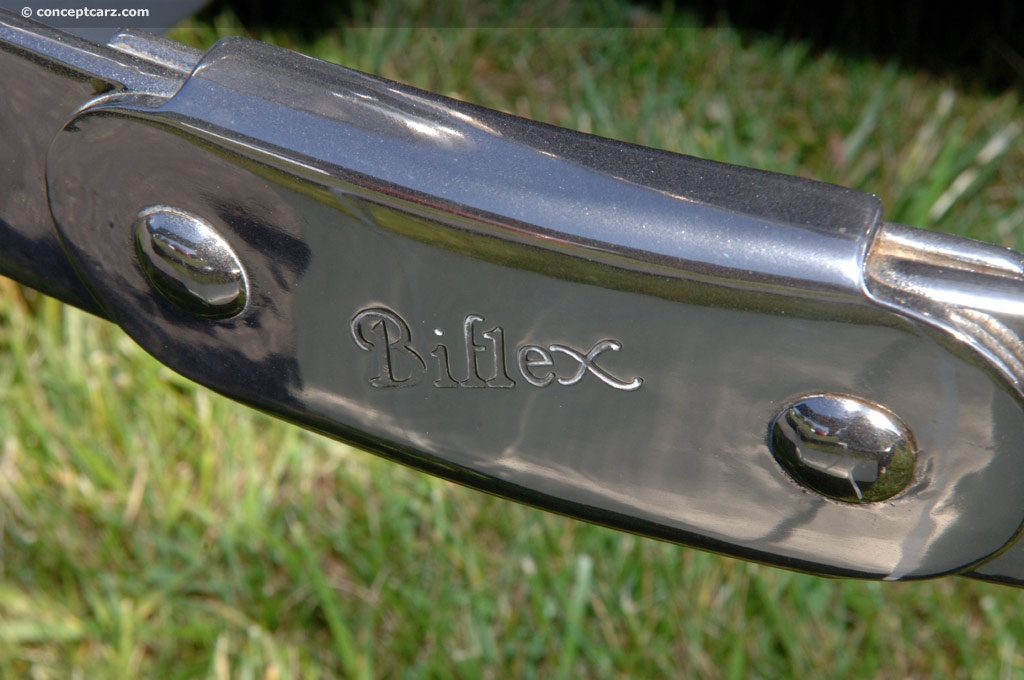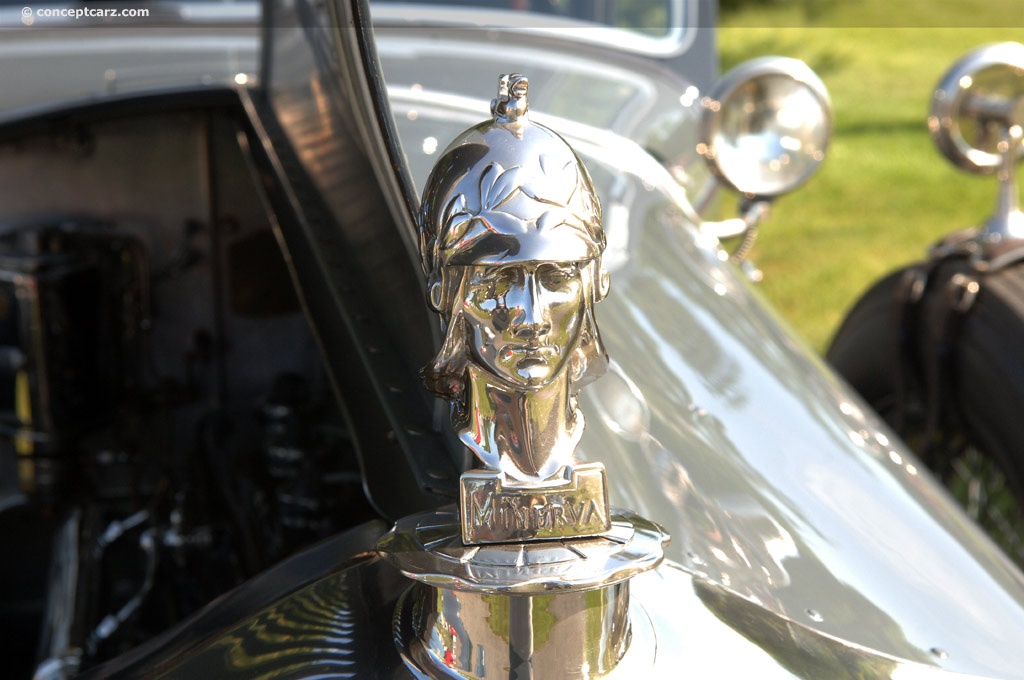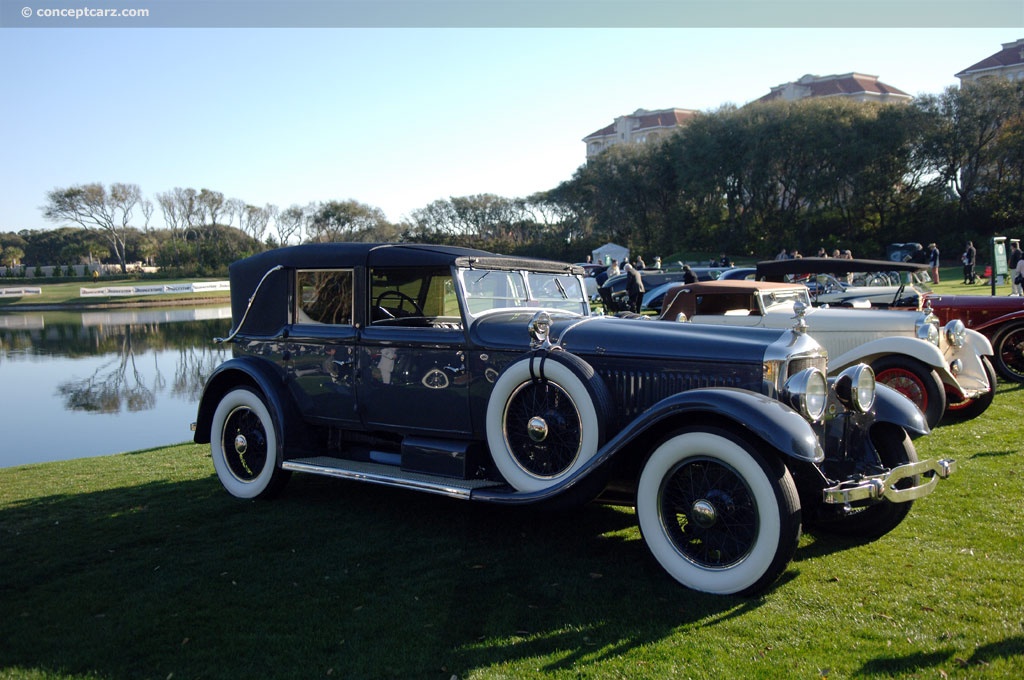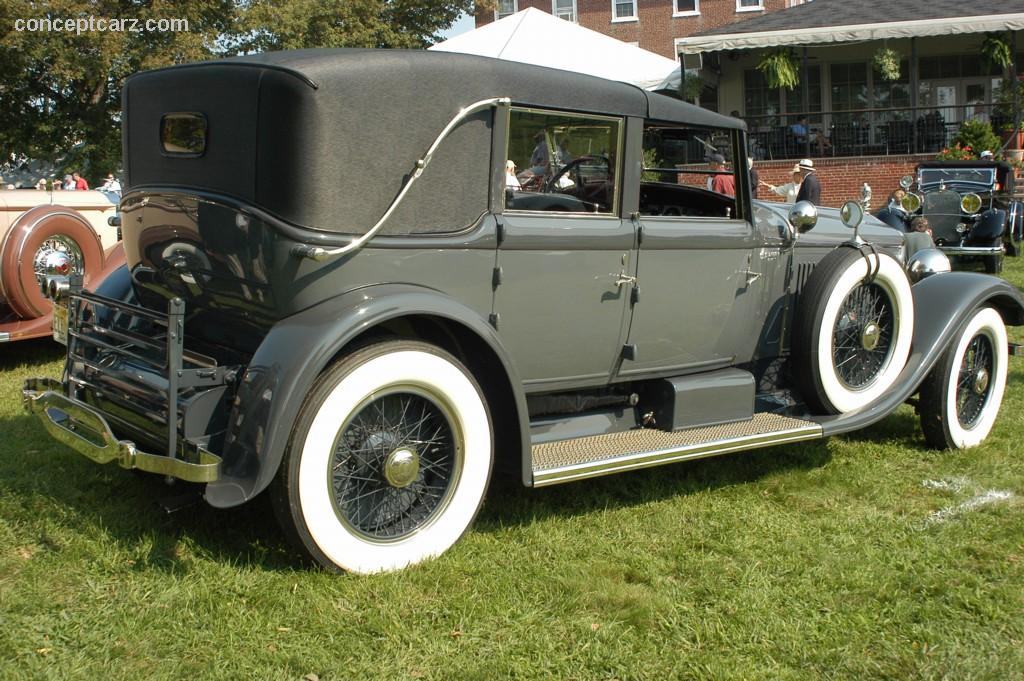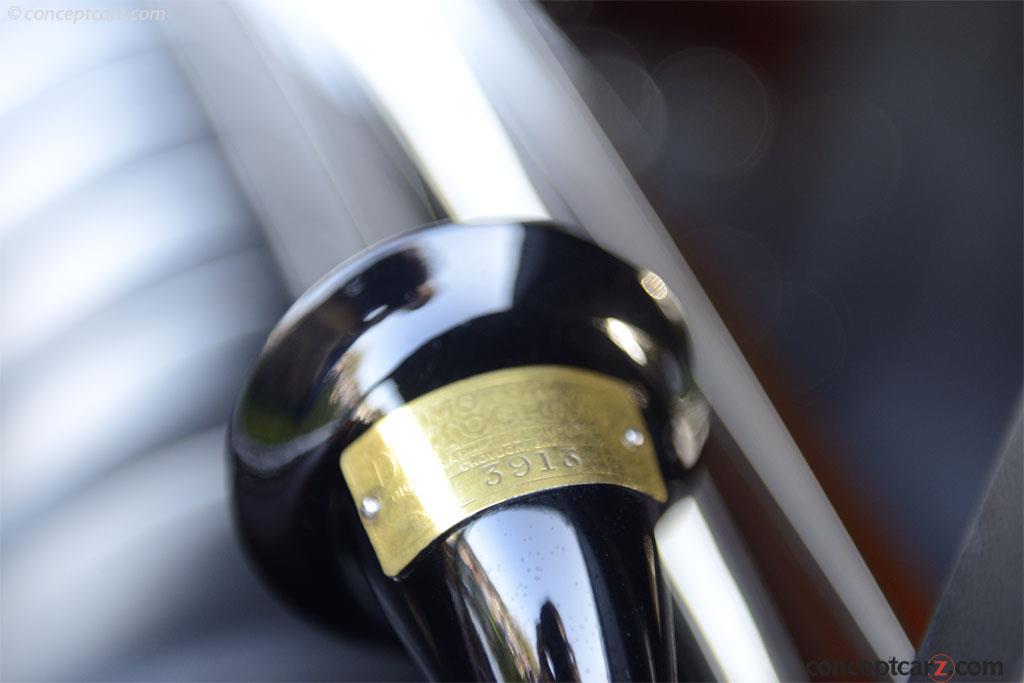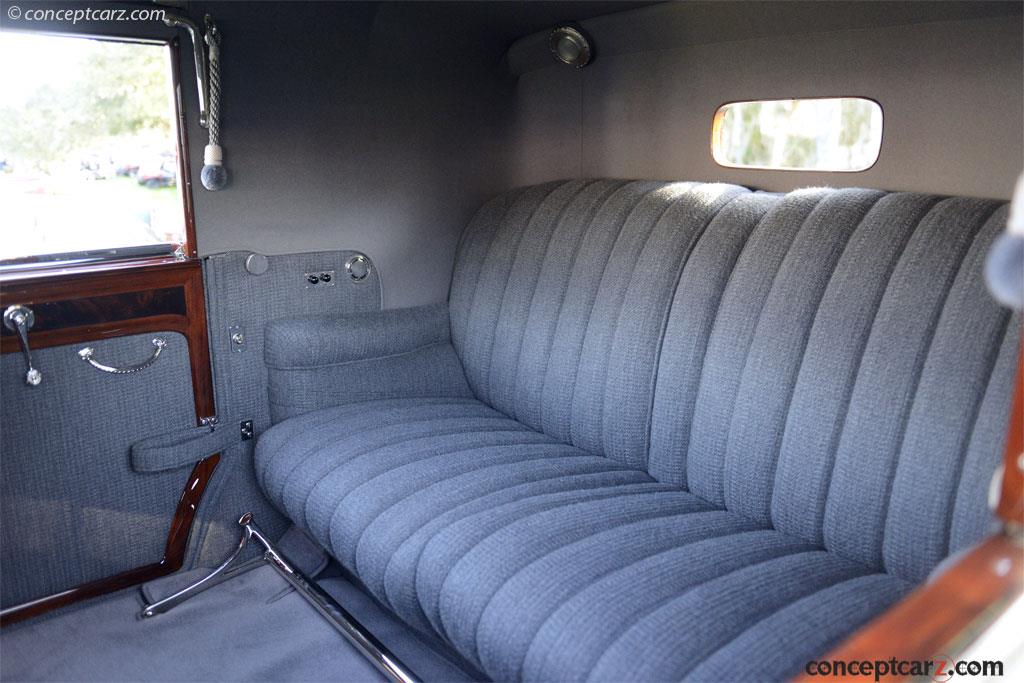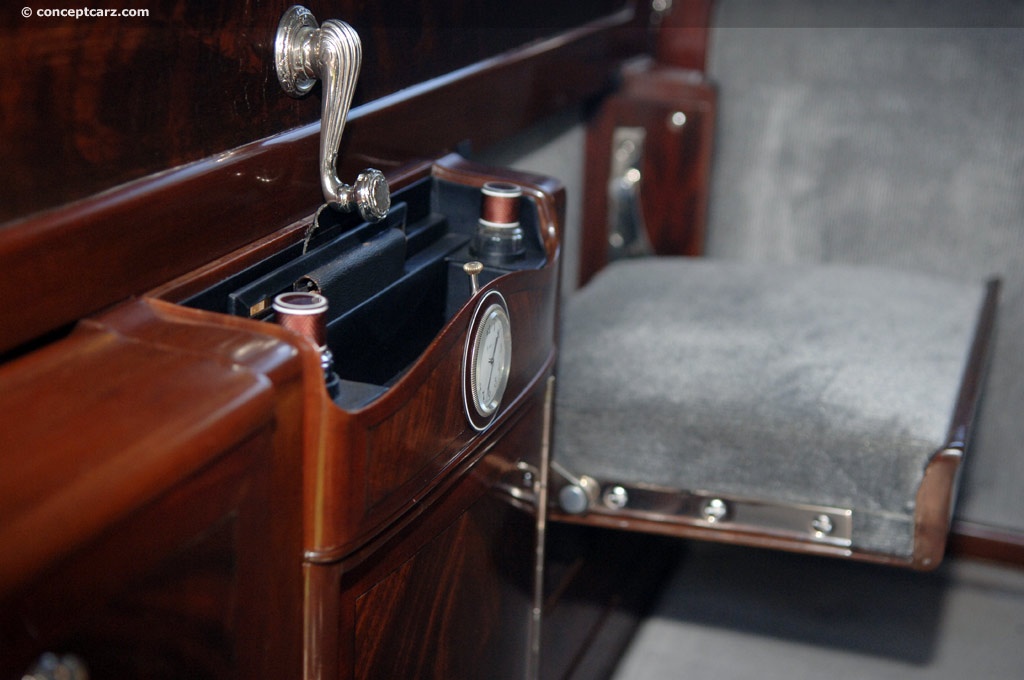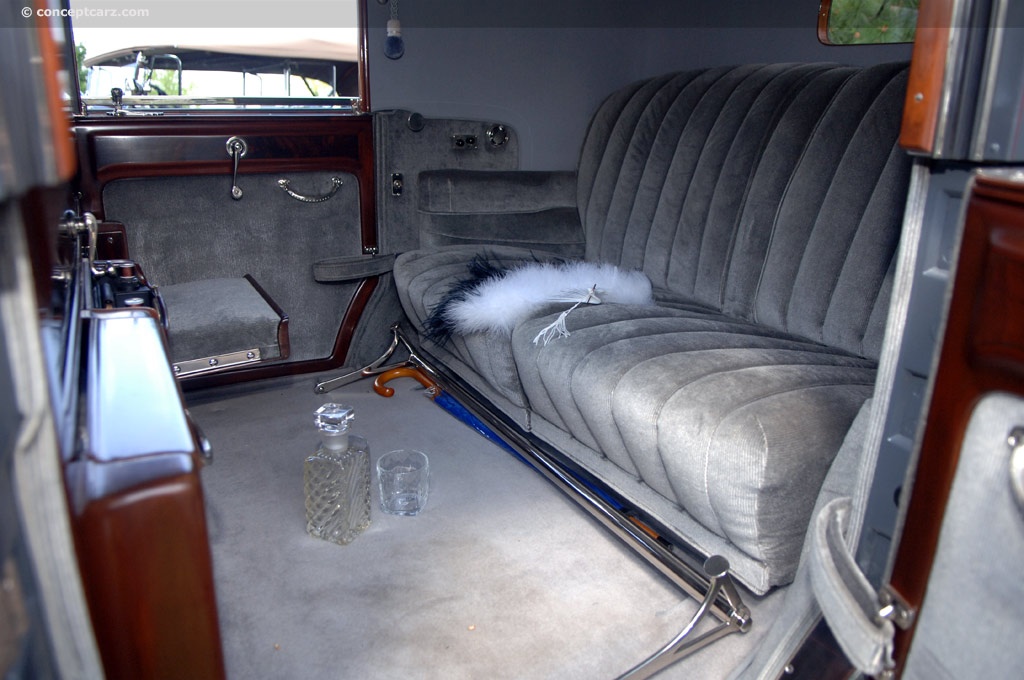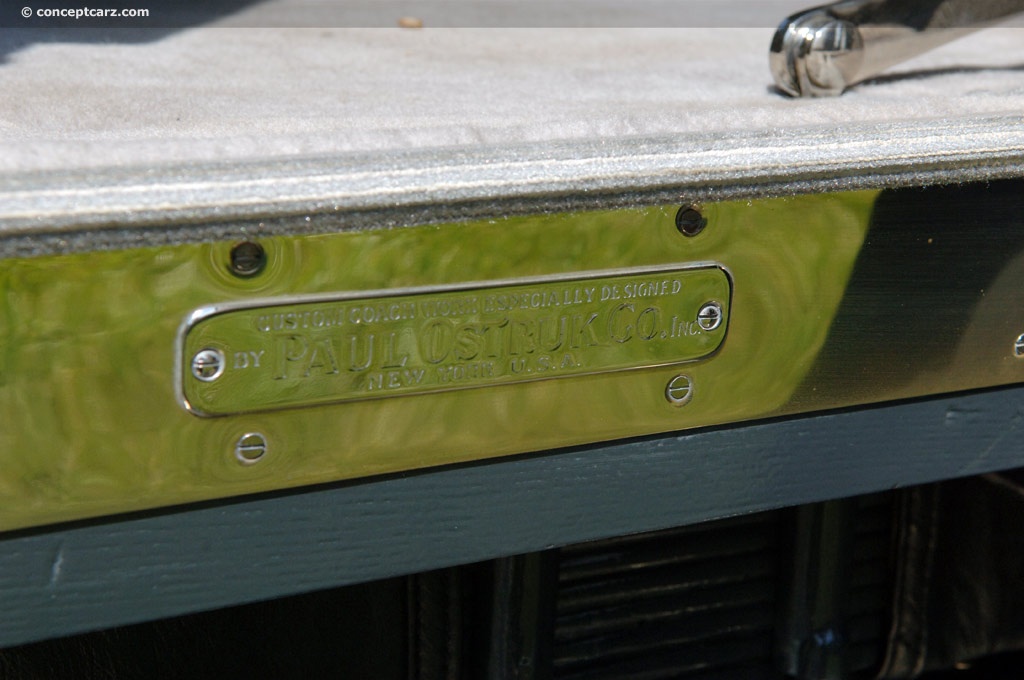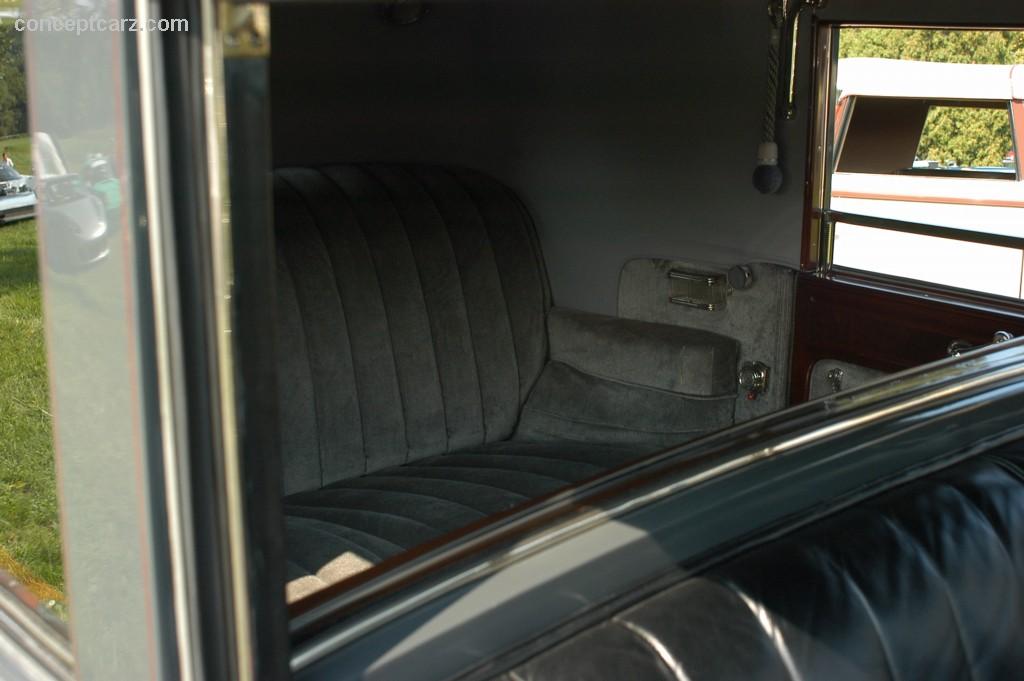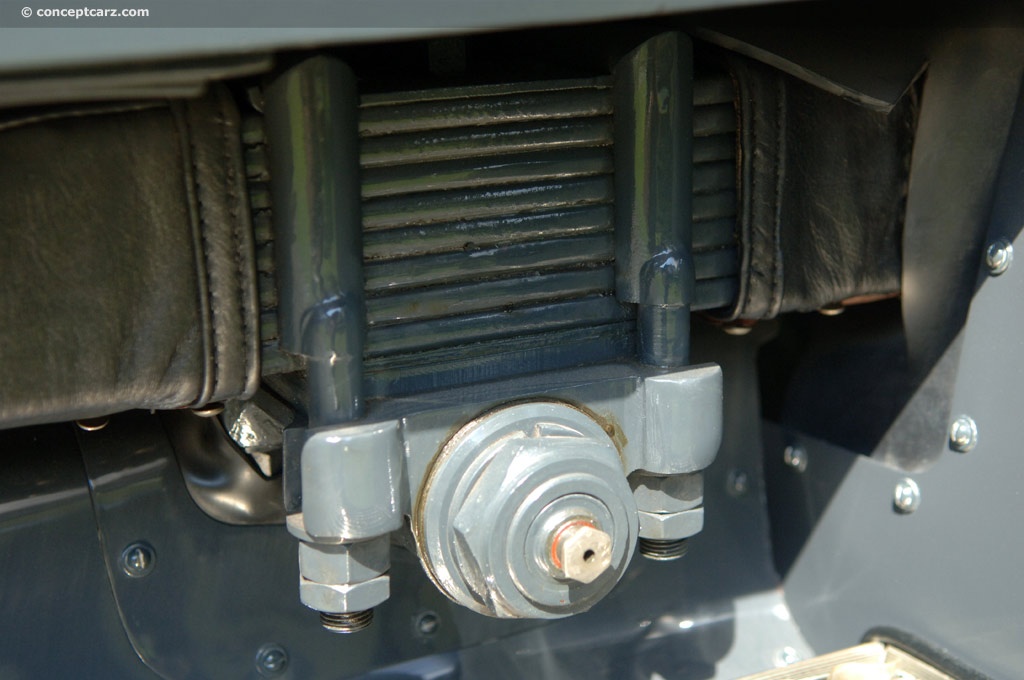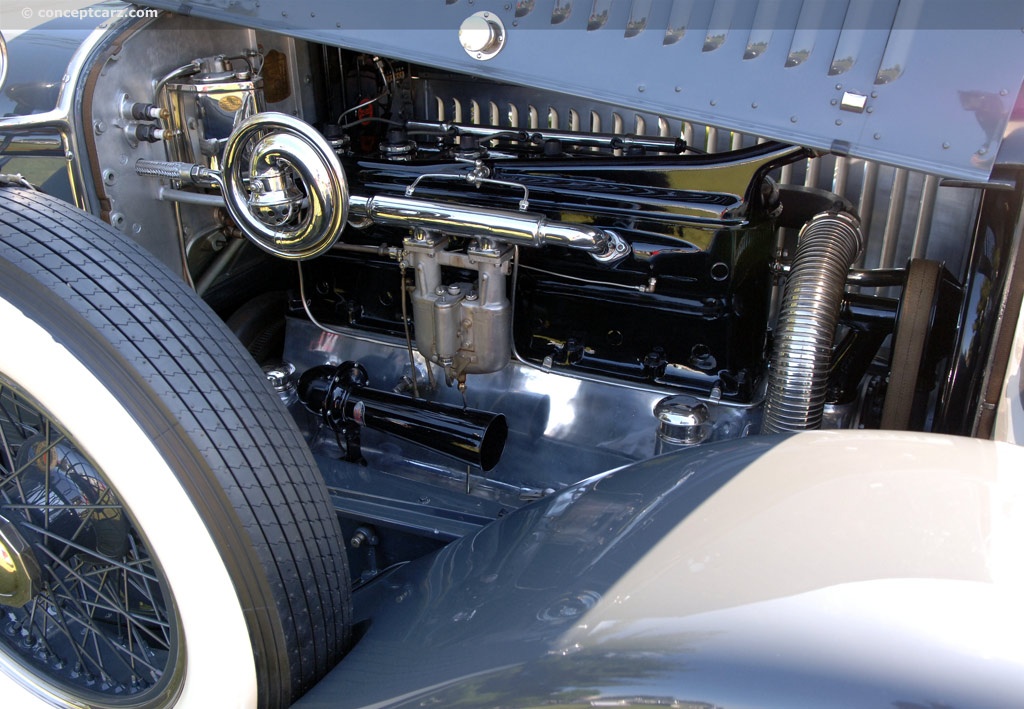Image credit: © conceptcarz.com (Reproduction Or reuse prohibited).
Belgium's car industry included marques such as FN, Imperia, Excelsior, and Metallurgique, but the most famous was Minerva, based in Antwerp. Sylvain de Jong established Minerva in 1897, and car production began in 1904. They first manufactured safety bicycles in the late 1800s, expanding to motorcycles and light cars at the turn of the century. In 1908, Minerva acquired a license to produce the almost silent Charles Knight-designed sleeve-valve engine, and the company began to compete seriously with marques such as Rolls-Royce and Hispano-Suiza. Minerva's list of customers included film stars and maharajas, as well as the royal families of Belgium, Sweden, and Norway. In 1926, the company introduced the AF model, which featured a 5.3-liter, 6-cylinder engine. This Type AF Transformable Town Car was built by Hibbard & Darrin of Paris and supplied through Paul Ostruk, a small coachbuilder who owned the Paris and New York Minerva franchises. It may have been customized by the Paul Ostruk Co. which is why it has both Hubbard & Darrin and Ostruk badging.
The car is equipped with a 5.3-liter six-cylinder, 30CV Knight Sleeve Valve engine. Charles Yale Knight of Indiana became dissatisfied with the noisy poppet valves is his personal cars, He designed an engine that used two concentric cast iron sleeves, or tubes, interposed between the pistons and cylinder block with pistons sliding on the inner sleeves. These sleeves were reciprocated by short connecting rods operated by a crankshaft-rotated eccentric shaft much like a camshaft. This engine was quieter but more expensive to manufacture and the added reciprocation mass and extra friction made the engine harder to turn over for starting.
This Minerva bears a Transformable Town Car body built by Hibbard & Darrin and perhaps slightly customized by Paul Ostruk, who was the Minerva agent and distributor in both New York and Paris by the late 1920s. The car has both Hibbard & Darrin and Ostruk badging. After several early owners, inventor, and industrialist Thomas Lester acquired this car in 1985 and restored it for the 1987 Pebble Beach Concours, where it garnered the top award.
The car is equipped with a 5.3-liter six-cylinder, 30CV Knight Sleeve Valve engine. Charles Yale Knight of Indiana became dissatisfied with the noisy poppet valves is his personal cars, He designed an engine that used two concentric cast iron sleeves, or tubes, interposed between the pistons and cylinder block with pistons sliding on the inner sleeves. These sleeves were reciprocated by short connecting rods operated by a crankshaft-rotated eccentric shaft much like a camshaft. This engine was quieter but more expensive to manufacture and the added reciprocation mass and extra friction made the engine harder to turn over for starting.
This Minerva bears a Transformable Town Car body built by Hibbard & Darrin and perhaps slightly customized by Paul Ostruk, who was the Minerva agent and distributor in both New York and Paris by the late 1920s. The car has both Hibbard & Darrin and Ostruk badging. After several early owners, inventor, and industrialist Thomas Lester acquired this car in 1985 and restored it for the 1987 Pebble Beach Concours, where it garnered the top award.
At the age of 15 in 1895, Holland native Sylvain de Jong emigrated from Amsterdam to Antwerp, Belgium. In 1895 he began manufacturing his Mercury bicycles. After a two-year stint in America to learn about machining tools, he returned to Belgium in 1897 to build a better bicycle called Minerva. He put together his first automobile in 1899, but serious production didn't begin until 1904. This began a long line of outstanding vehicles that became favorites of the Kings of Belgium, Sweden, and Norway. A pivotal decision was made in 1909 to use Charles Knight's sleeve-valve engine, which was quiet, efficient, trouble-free, and durable. It was also expensive to build, expensive to repair, and had a thirst for oil and gasoline.
The car displayed is an AF Transformable Town Car with body by Hibbard and Darrin of Paris. This example has a six-cylinder engine with sleeve valves. It has been a trophy winner at such events as Pebble Beach, Amelia Island, and Meadowbrook.
The Minerva automobiles were a favorite of the royal families of many European countries and in the United States, where its elegance and durability assured a faithful clientele. This model has a removable roof panel over the driver's compartment to make it into a true panel car for the chauffeur. Minerva began making automobiles in 1902. From 1910 all were equipped with the Knight double sleeve valve engine, prized by luxury automakers for its silence, smoothness, and flexibility, which could push this 5,300-pound car to 70 mph.
This car features an interior lavishly decorated in mahogany and German silver. It is known as a transformable town car because the top can be opened like a town car so only the driver is exposed to the elements or lowered completely as a landaulet. The car was built at a cost of $15,000 during the height of Prohibition.
This car was a part of the Thomas Lester Collection recently acquired by the current owner at the New York Waldorf Astoria Show.
By 1938, the company ceased operation though two comebacks were attempted following World War II, the final one in 1956 fitting the name to a four-cylinder Continental-engine equipped Jeep-like vehicle.
The car displayed is an AF Transformable Town Car with body by Hibbard and Darrin of Paris. This example has a six-cylinder engine with sleeve valves. It has been a trophy winner at such events as Pebble Beach, Amelia Island, and Meadowbrook.
The Minerva automobiles were a favorite of the royal families of many European countries and in the United States, where its elegance and durability assured a faithful clientele. This model has a removable roof panel over the driver's compartment to make it into a true panel car for the chauffeur. Minerva began making automobiles in 1902. From 1910 all were equipped with the Knight double sleeve valve engine, prized by luxury automakers for its silence, smoothness, and flexibility, which could push this 5,300-pound car to 70 mph.
This car features an interior lavishly decorated in mahogany and German silver. It is known as a transformable town car because the top can be opened like a town car so only the driver is exposed to the elements or lowered completely as a landaulet. The car was built at a cost of $15,000 during the height of Prohibition.
This car was a part of the Thomas Lester Collection recently acquired by the current owner at the New York Waldorf Astoria Show.
By 1938, the company ceased operation though two comebacks were attempted following World War II, the final one in 1956 fitting the name to a four-cylinder Continental-engine equipped Jeep-like vehicle.
No auction information available for this vehicle at this time.
Recent Sales of the Minerva AF
(Data based on Model Year 1928 sales)
Minerva AFs That Failed To Sell At Auction
1928 Minerva AF's that have appeared at auction but did not sell.
| Vehicle | Chassis | Event | High Bid | Est. Low | Est. High |
|---|
Vehicles With Comparable Market Values
Similar sales to the range.
1928 Minerva AF
• Additional valuation insight and sales data• History
• Specifications
• Image gallery
• Other Minerva AF model years
